If you're gluten-free, you're going to love this complete guide to gluten free Chinese food. I'll share what you can eat when going out, and also the 30+ BEST gluten free Chinese food recipes to try!
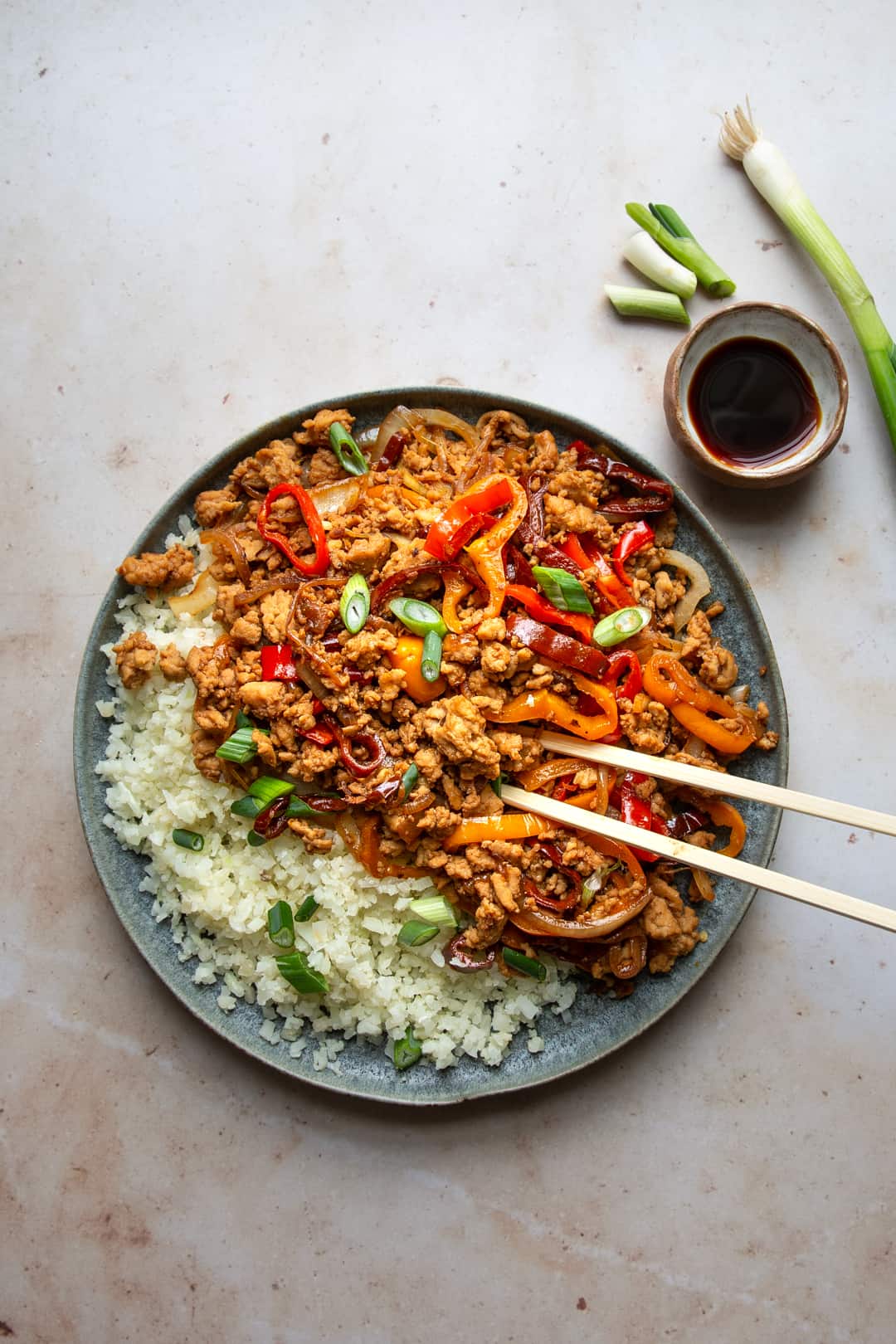
A delicious Chinese restaurant meal is one of life’s great pleasures. Naturally, people want to know whether it is still possible to eat great Chinese food while on a gluten free diet.
So is Chinese food gluten free? It’s complicated. The short answer is likely no. But fortunately, the answer doesn’t end there.
Let's look into what you can order that is gluten free, how to order it at a Chinese restaurant, and tips for talking placing your order with the waiter.
And if you're looking to make your own gluten free Chinese food at home, I've always shared some delicious recipes at the end of this post
Gluten Free Chinese Dishes? (Always Double Check)
My quick answer is no because most Chinese food does contain gluten. It can be quite challenging to find gluten free food in Chinese cuisine.
There are several factors that make finding gluten free Chinese food difficult. One of the biggest challenges is the use of soy sauce.
Traditional soy sauce is made with wheat flour and is unsuitable for those with Celiac disease or Non-Celiac gluten sensitivity.
Soy sauce is used widely in Chinese cooking, both as a seasoning on its own and as an ingredient in sauces such as teriyaki.
Other ‘Dark sauces,’ such as oyster sauce, fish sauce, teriyaki sauce, and hoisin sauce, are likely to contain hidden gluten unless specifically marked gluten-free.
Many Chinese restaurants use breaded or battered ingredients in some dishes. Wheat-based breading or batter both contain gluten. Gluten is also present in wonton wrappers and many types of noodles. Spring rolls (if fried) and egg rolls almost always contain gluten.
Cross-contamination is always a potential issue for those with celiac disease when eating out, and Chinese restaurants are no exception to this rule.
The only way to avoid this is if the restaurants use dishes and utensils solely for gluten free cooking. You will have to discuss this with your wait staff to ensure compliance.
It might be tricky to find gluten free Chinese food, but it shouldn’t be impossible. There are some steps you can take to enjoy Chinese food safely.
And don't forget to check out the gluten free Panda Express menu if you're headed there!
Cross-Contamination
Possible sources of cross-contamination in Chinese restaurant food include shared oil in fryers, water that has been used to cook wheat-based noodles, and shared pans or woks.
Talk to your server about these risks, and ask questions about how they avoid cross-contamination.
Some cross-contamination risks - like shared oil in fryers - are almost impossible to eliminate, but changing pans or using fresh water when steaming food should be easier.
However, remember that the risk of cross-contamination is down to the individual kitchen. If you don’t feel safe eating somewhere, you can always take your business elsewhere.
What Chinese Food is Gluten Free
When ordering at a Chinese restaurant, try to go for simple dishes. Dishes such as plain steamed vegetables and meats are all more likely to be gluten free. Ask for a side of steamed green beans or other vegetables with no sauce.
Light sauces are more likely to be gluten free than dark sauces. Often, sauces are thickened with cornstarch, but confirming this with your server is a good idea.
Plain steamed white rice is gluten free if it has no sauce or seasonings on it, but always confirm that it is gluten free with your server.
Always avoid regular soy sauce in Chinese restaurants. A good alternative is tamari, a Japanese soy sauce made without wheat. Ask your server whether they have gluten-free soy sauce available.
Otherwise, adding your tamari to plain dishes at the table gives you the same flavor without the gluten.
A little preparation can go a long way when it comes to eating out gluten free. If you can look at the menu ahead of time or phone to speak to the restaurant, you can get a better idea of what’s available.
This guide from Beth Israel Lahey Health gives you a great idea of the dishes you can eat and how dishes can be adapted to be gluten free.
Talk to your server about what might be suitable, and don’t be afraid to ask questions! Do be aware that there are no guarantees and that the risk of cross-contamination is always an issue. Be very specific about what you can and cannot eat.
Chinese Dishes That Are Gluten Free (Always Double Check)
- Steamed Vegetables
- Steamed Rice
- Steamed Chicken or Seafood
- Fried Rice (must use gluten free tamari not soy sauce)
- Egg Drop Soup
- Rice Noodles
- Soba Noodles
Gluten Free Noodles (Always Double Check)
- Rice Noodles: Rice noodles are a staple in many Chinese dishes and are typically made from rice flour or a combination of rice and tapioca flour. They have a soft and slightly chewy texture. Rice noodles are commonly used in dishes like Pad Thai, Pho, and Singapore noodles.
- Bean Thread Noodles (Cellophane Noodles): Bean thread noodles are made from mung bean starch and are translucent in appearance. They are also known as glass noodles or cellophane noodles. These noodles are gluten-free and are often used in stir-fries, soups, and spring rolls.
- Sweet Potato Noodles: Sweet potato noodles, also known as Korean glass noodles or dangmyeon, are made from sweet potato starch. Despite the name, they are commonly used in Chinese cuisine as well. These noodles have a slightly sweet flavor and a chewy texture. They are often used in dishes like Japchae (Korean stir-fried noodles) and stir-fries with vegetables and meat.
- Buckwheat Noodles (Soba Noodles): While not traditionally Chinese, soba noodles are gluten-free and widely available in Chinese cuisine. Soba noodles are made from buckwheat flour, which gives them a nutty flavor. They are commonly used in cold noodle salads or served in hot broth.
- Gluten-Free Egg Noodles: Some Chinese restaurants offer gluten-free egg noodles made from a combination of alternative flour, such as rice flour and tapioca starch. These noodles provide a similar texture to traditional wheat-based egg noodles and can be used in dishes like stir-fries or noodle soups.

Making gluten-free Chinese food at home can be a wonderful way to explore the flavors of this cuisine while adhering to a gluten-free diet. Here are some tips to help you create gluten-free Chinese dishes in your own kitchen. It's not as hard as you think!
- Use Gluten-Free Soy Sauce: Traditional soy sauce contains gluten, so opt for gluten-free soy sauce or tamari. These gluten-free alternatives provide the savory umami flavor that is characteristic of Chinese cuisine. You can use gluten-free soy sauce or tamari in stir-fries, marinades, dipping sauces, and more.
- Choose Gluten-Free Noodles: As mentioned earlier, various gluten-free noodle options are available. Rice noodles, bean thread noodles (cellophane noodles), and sweet potato noodles are great gluten-free choices for Chinese dishes.
- Embrace Fresh Ingredients: Chinese cuisine relies heavily on fresh vegetables, herbs, and proteins. Use a variety of colorful vegetables such as bok choy, broccoli, snow peas, carrots, bell peppers, and mushrooms. Pair them with gluten-free proteins like chicken, shrimp, beef, or tofu.
- Make Your Own Sauces: Many Chinese sauces contain gluten, so consider making your own gluten-free versions at home. Combine gluten-free soy sauce, garlic, ginger, honey, rice vinegar, and other flavorings to create tasty stir-fry sauces, glazes, or dressings.
- Master Stir-Frying Techniques: Stir-frying is a popular cooking method in Chinese cuisine. It involves quickly cooking ingredients in a hot pan or wok. Ensure your pan or wok is clean and free from any gluten residue. Use high heat, a gluten-free cooking oil (such as vegetable oil or sesame oil), and quickly cook your vegetables, proteins, and noodles to maintain their texture and flavor.
- Explore Authentic Chinese Recipes: There are numerous authentic Chinese recipes that are naturally gluten-free or can be easily modified. Look for recipes that feature gluten-free ingredients as the base and explore dishes such as stir-fried vegetables, Mongolian beef, Kung Pao chicken, cashew shrimp, or Szechuan tofu.
- Be Cautious with Pre-Packaged Ingredients: When using pre-packaged sauces, spice mixes, or condiments, always read labels to ensure they are gluten-free. Some may contain gluten or gluten derivatives, so choose certified gluten-free products or make your own versions.
- Maintain a Gluten-Free Kitchen: Prevent cross-contamination by using separate utensils, cutting boards, and cooking equipment for gluten-free Chinese cooking. Clean surfaces thoroughly before preparing your gluten-free dishes to avoid any traces of gluten.
- Experiment and Adapt: Don't be afraid to experiment and adapt traditional Chinese recipes to make them gluten-free. Explore different ingredient combinations, spices, and flavors to suit your taste preferences while adhering to a gluten-free diet.
By incorporating these tips and your creativity, you can enjoy a wide variety of gluten-free Chinese dishes right in your own kitchen. Experiment, have fun, and savor the flavors of gluten-free Chinese cuisine!
30+ Best Gluten Free Chinese Food Recipes
1. Vegan Kung Pao with Tofu, Vegetables & Cashews
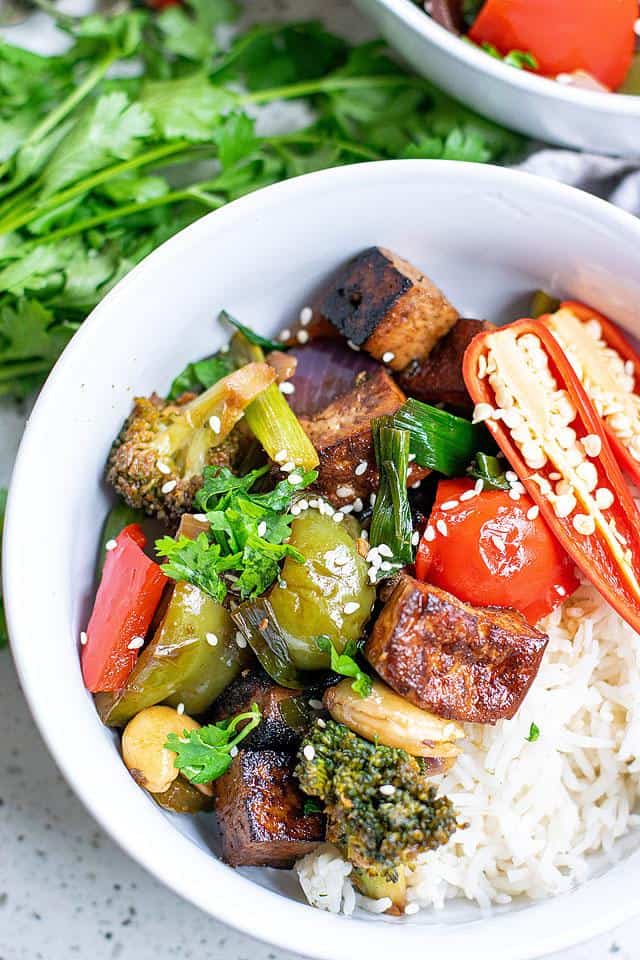
This Kung Pao with tofu is a great choice for those craving gluten free Chinese food.
Not only is this dish vegan, but it's also a delicious gluten free Chinese recipe that you're sure to love.
If you're on the hunt for a tasty tofu-based, gluten free Chinese dish, look no further!
2. Easy General Tso Shrimp Stir Fry
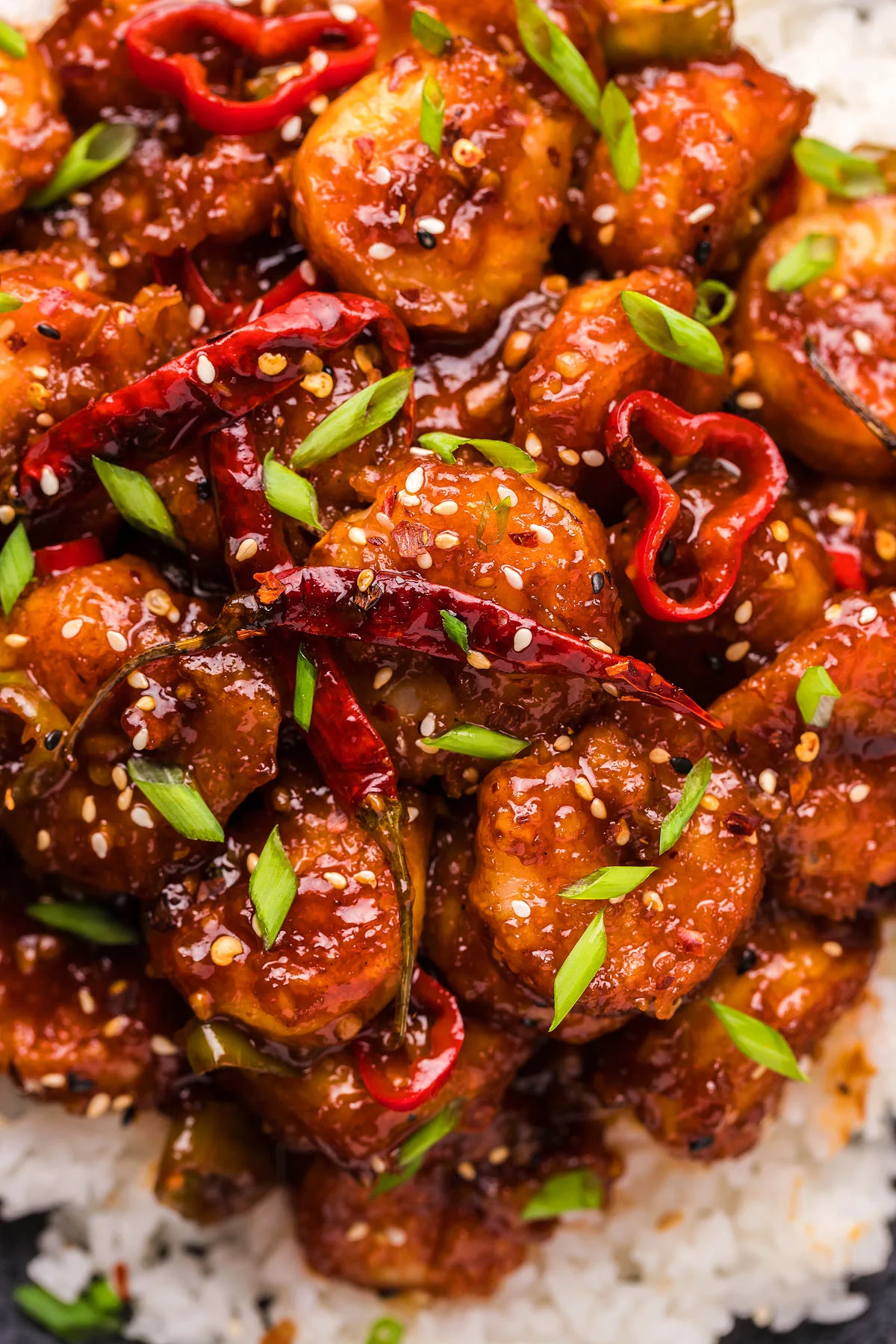
General Tsao's shrimp is a delicious gluten free Chinese dish that you can prepare in under 30 minutes.
Known also as General Tao's shrimp, this stir fry is a popular choice for gluten free Chinese food takeout.
Now, you can enjoy this gluten free Chinese recipe right in the comfort of your own home.
3. Salt & Pepper Pork Chop Bites
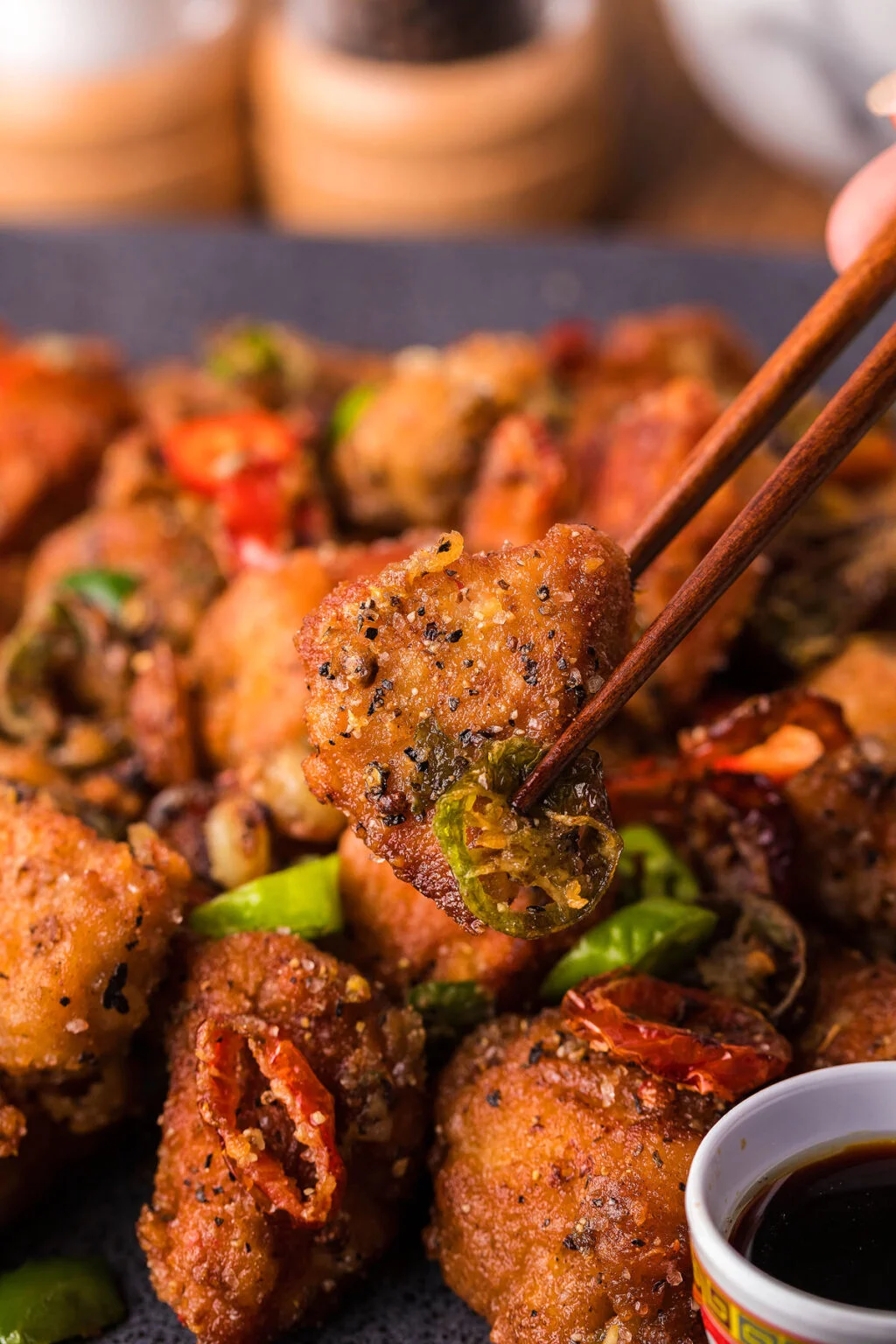
Why settle for local Chinese takeout when you can cook your own gluten free Chinese dish?
This homemade gluten free pork chop recipe is bursting with the flavors of Asian salt and pepper seasoning.
You have the freedom to adjust the spice level to your liking, making it a perfect gluten free Chinese food for everyone in the family.
4. Air Fryer Chinese Tofu Recipe (Gluten-Free)
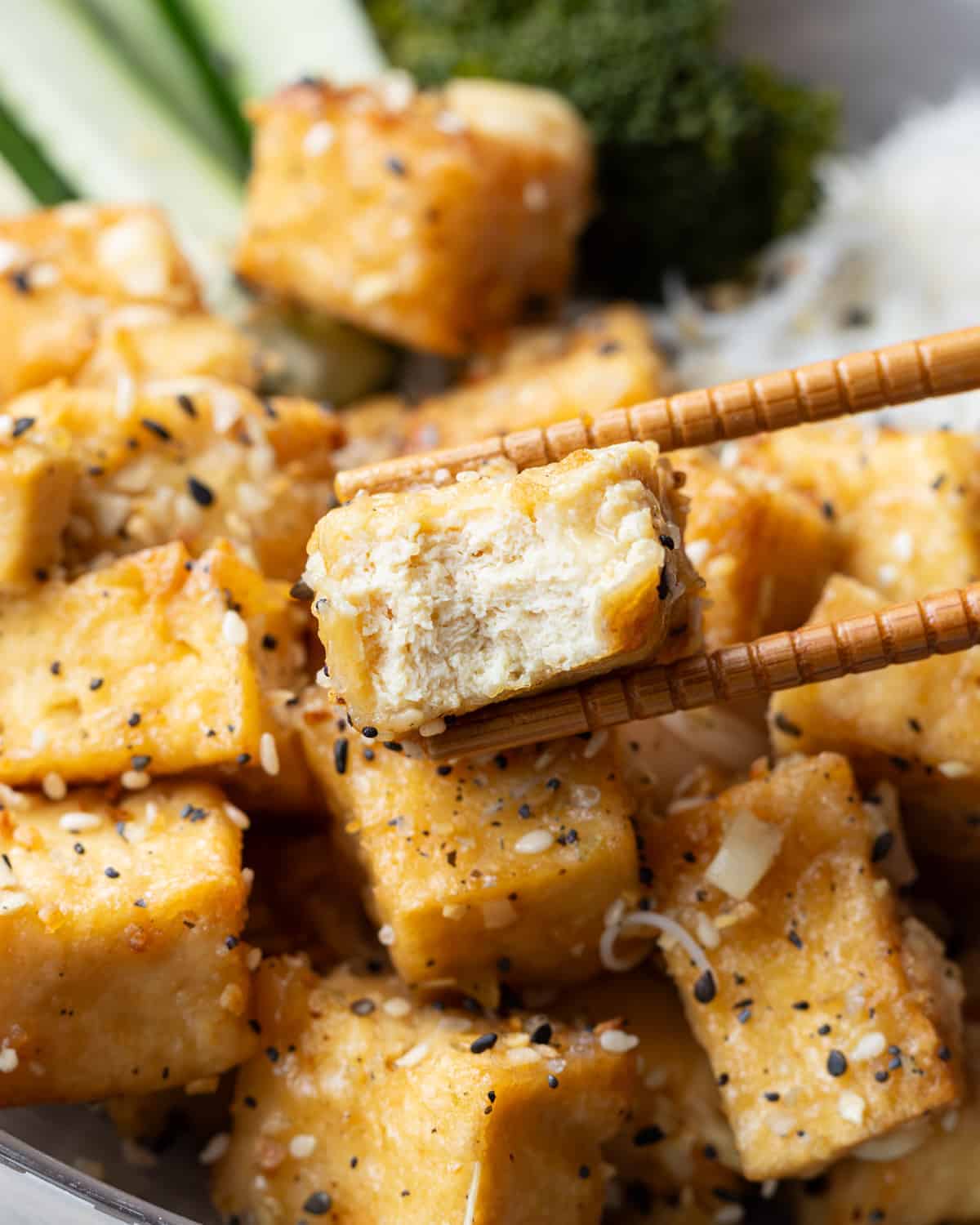
Explore a simple and tasty gluten free Chinese recipe - Air Fryer General Tsos's tofu.
This dish is a great choice for busy families who enjoy gluten free Chinese food.
It's not only quick and easy to prepare, but also a delicious way to enjoy a gluten free Chinese dish.
5. Gluten Free Potstickers - Pork Dumplings with Sesame Sauce
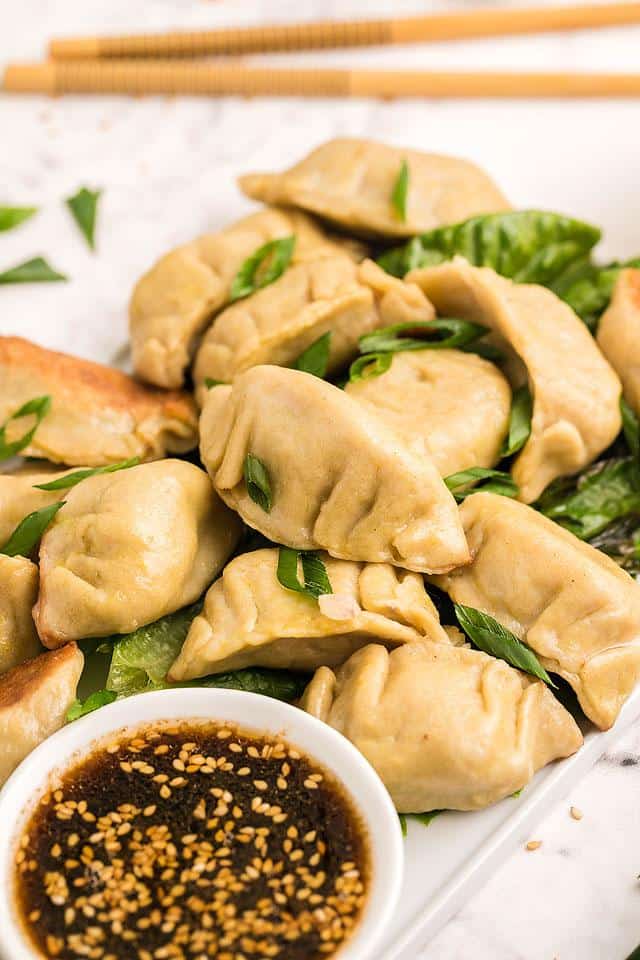
These gluten free potstickers are a great choice for those craving gluten free Chinese food.
They are not only delicious but also easy to prepare, making them perfect for a quick gluten free Chinese dish.
So, if you thought gluten free Asian food was difficult to make, these potstickers will prove you wrong!
6. Classic Vegetable Fried Rice (Gluten-Free, Vegan, Allergy-Free)
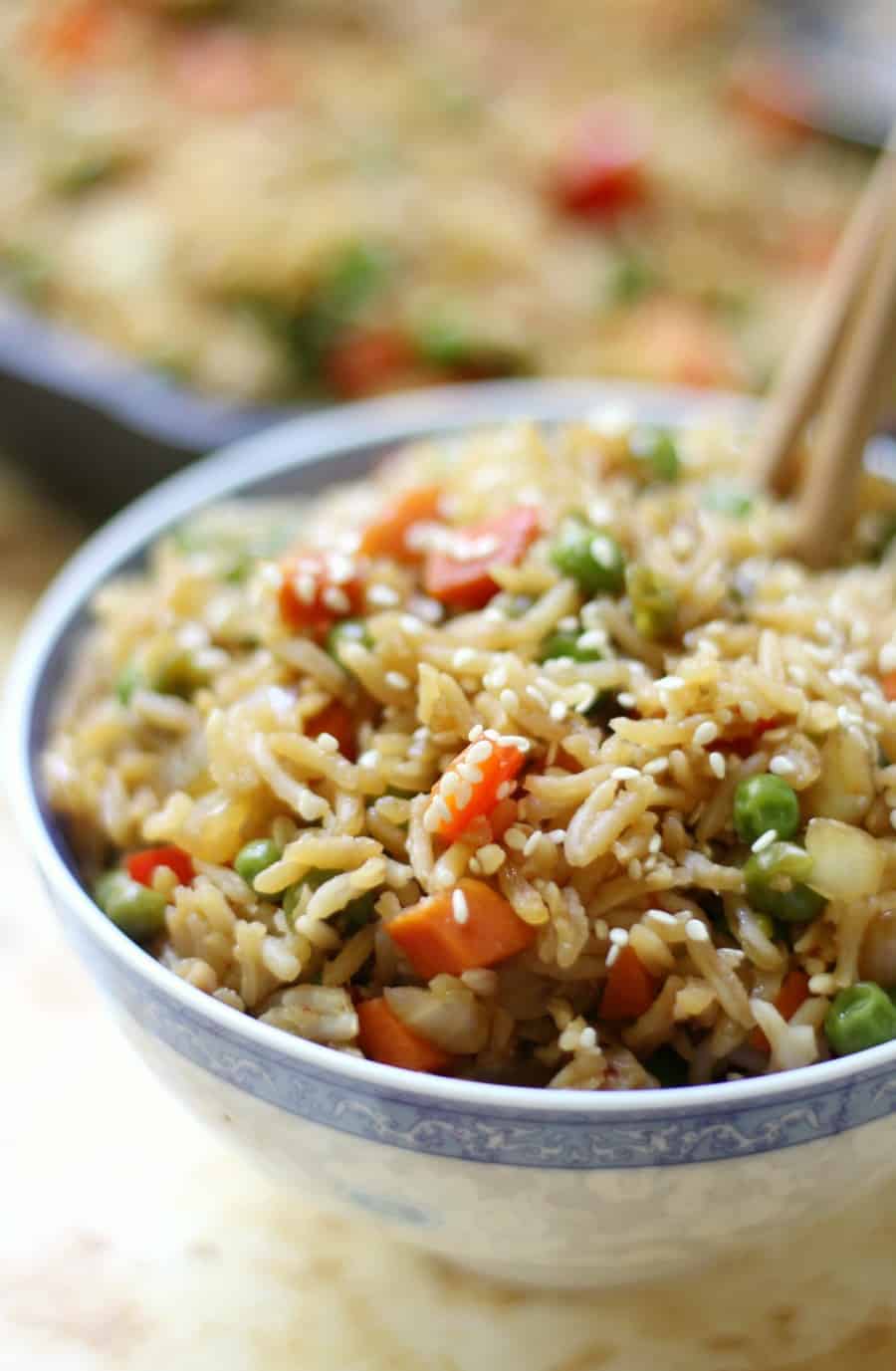
Looking for a gluten free Chinese dish? Try this quick and easy Classic Vegetable Fried Rice recipe, no need for takeout!
This gluten free Chinese food is not only vegan and top 8 allergy-free, but it's also healthy and packed with veggies.
It's the perfect way to use leftover rice and transform it into a delicious lunch or dinner.
7. Non Spicy Mapo Tofu - Plates by Nat
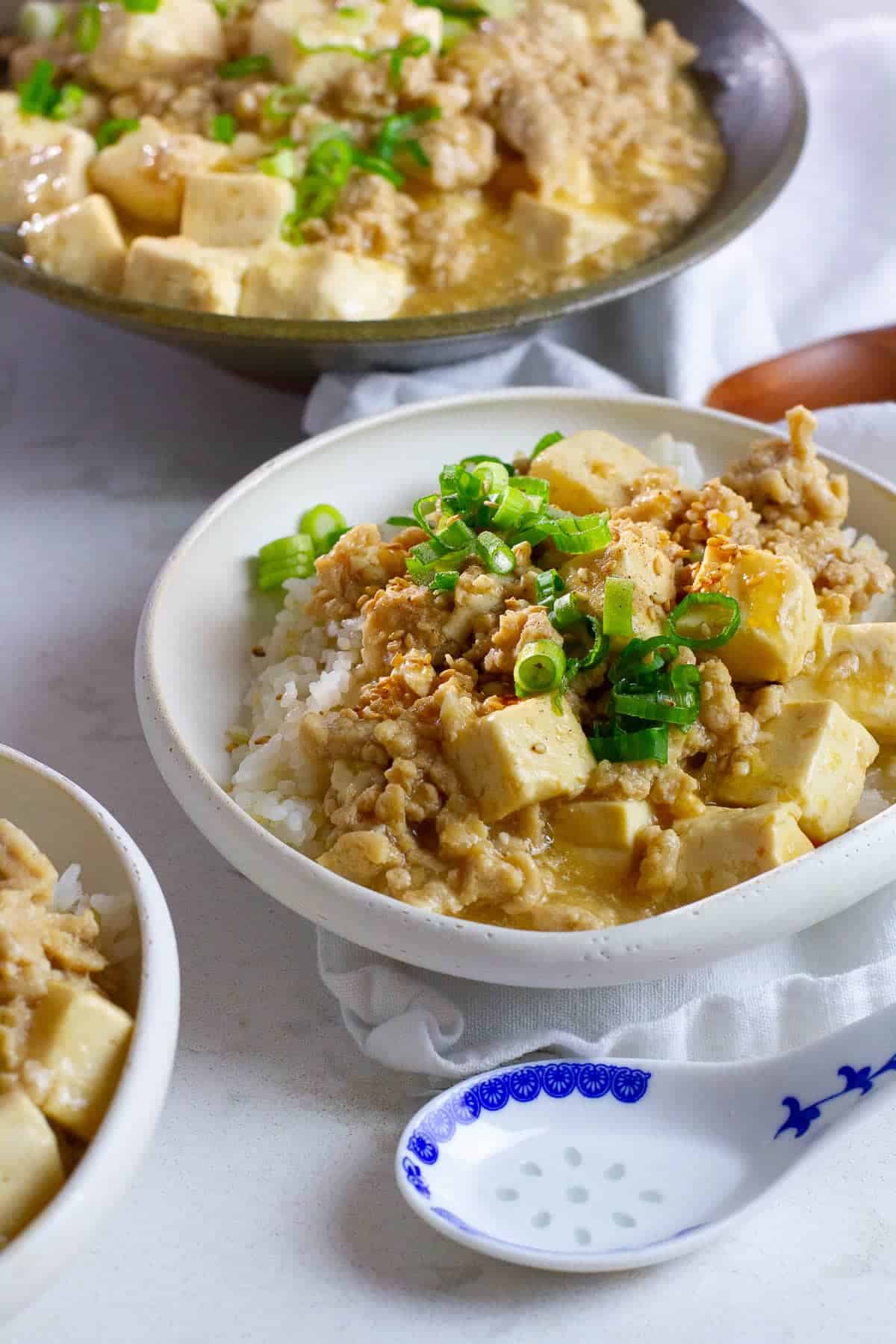
This non-spicy mapo tofu is a perfect choice for those craving gluten free Chinese food.
It's a family-friendly dish that even the little ones will enjoy, thanks to its mild flavor profile.
Plus, it's made with nutritious ground chicken, making it a healthy gluten free Chinese dish to incorporate into your meal rotation.
8. Kung Pao Cauliflower
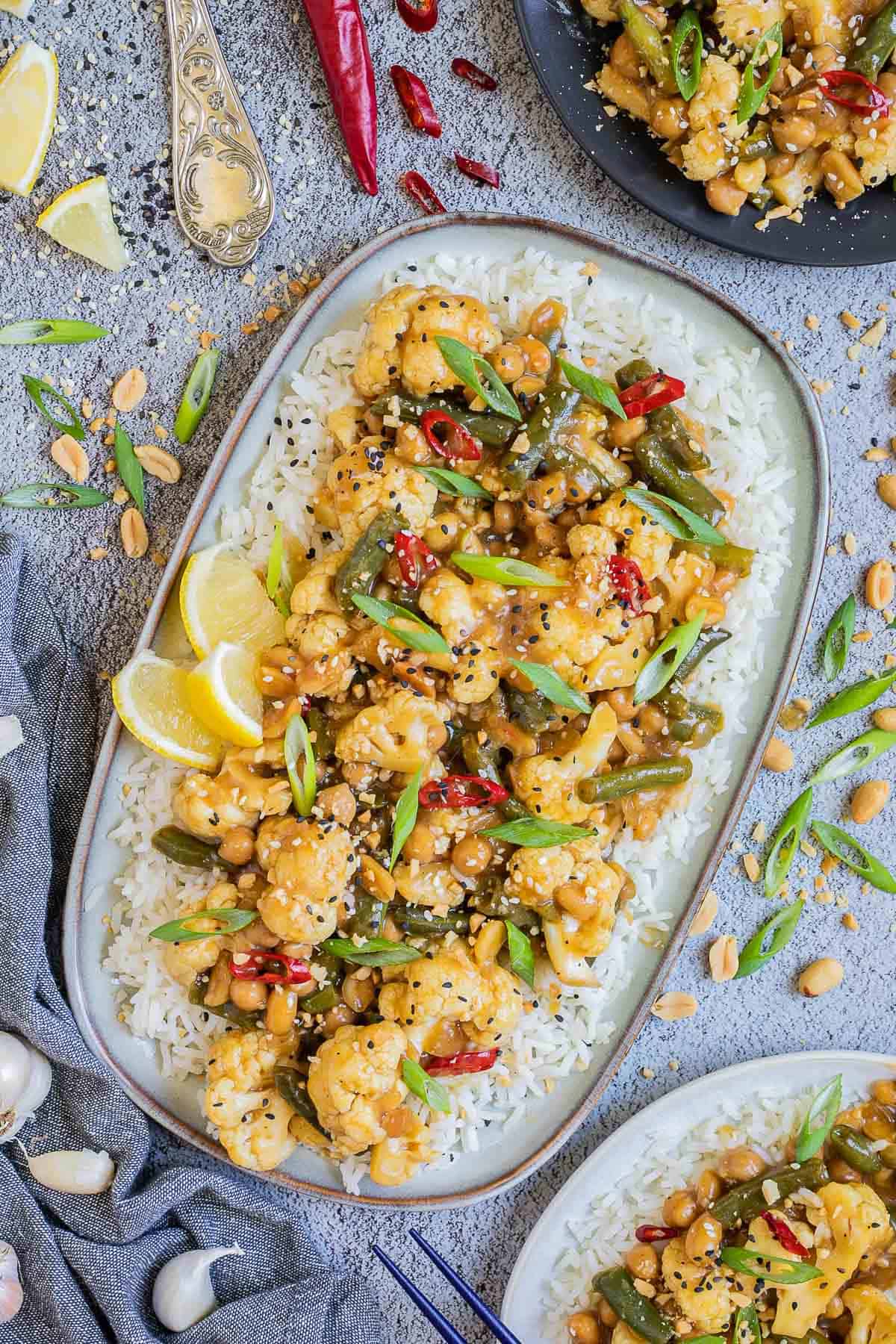
This Kung Pao cauliflower is a perfect choice for anyone craving gluten free Chinese food.
It's a healthy and tasty spin on the traditional Kung Pao chicken, making it a great gluten free Chinese dish.
Your guests will be so impressed, they might even think you've ordered takeout from their favorite gluten free Chinese restaurant!
9. Crispy Vegan Orange Chicken (Copycat Panda Express)
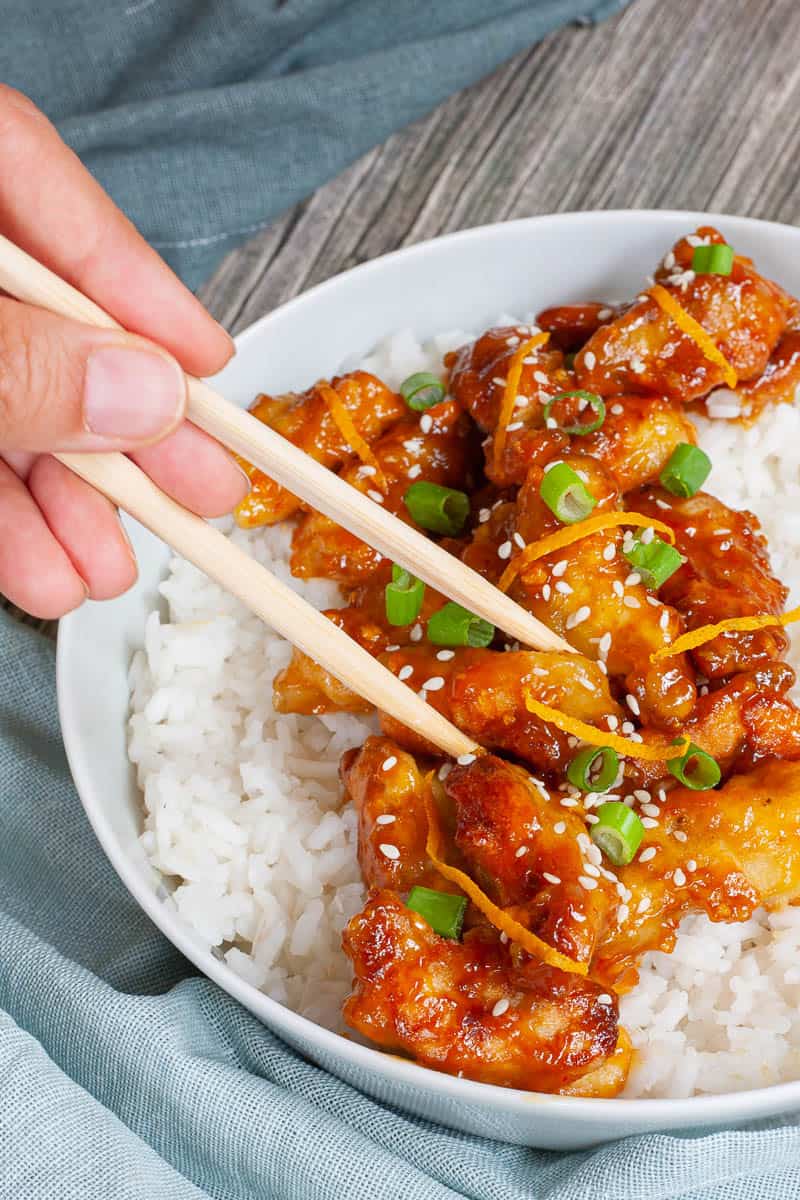
Craving gluten free Chinese food? Our take on Panda Express's Orange Chicken is a must-try.
We use crispy oyster mushroom strips for a vegan twist, ensuring it's a gluten free Chinese dish everyone can enjoy.
Coated in a sticky orange sauce, this heavenly gluten free Chinese recipe will satisfy your tastebuds.
10. Sheet Pan Cauliflower Fried Rice (Gluten-Free)
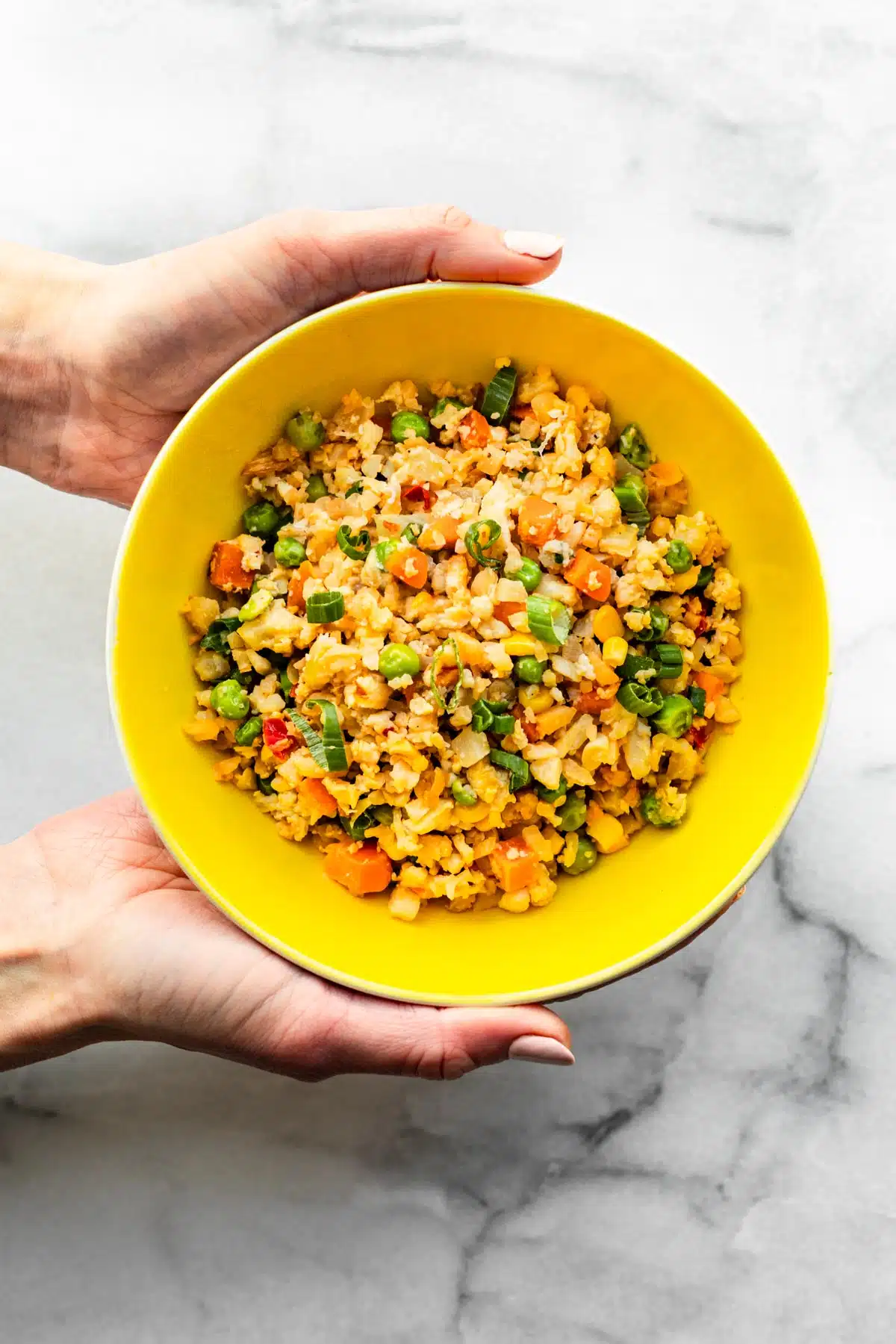
Unlock the secret to a delicious gluten free Chinese dish with our easy-to-follow recipe.
Our nutritious, family-friendly cauliflower fried rice is a crowd-pleaser, perfect for those on a gluten free diet.
Learn how to effortlessly prepare this gluten free Chinese food on a sheet pan, ensuring everyone can enjoy a tasty, healthy meal.
11. Black Pepper Chicken - Copycat Panda Express Recipe
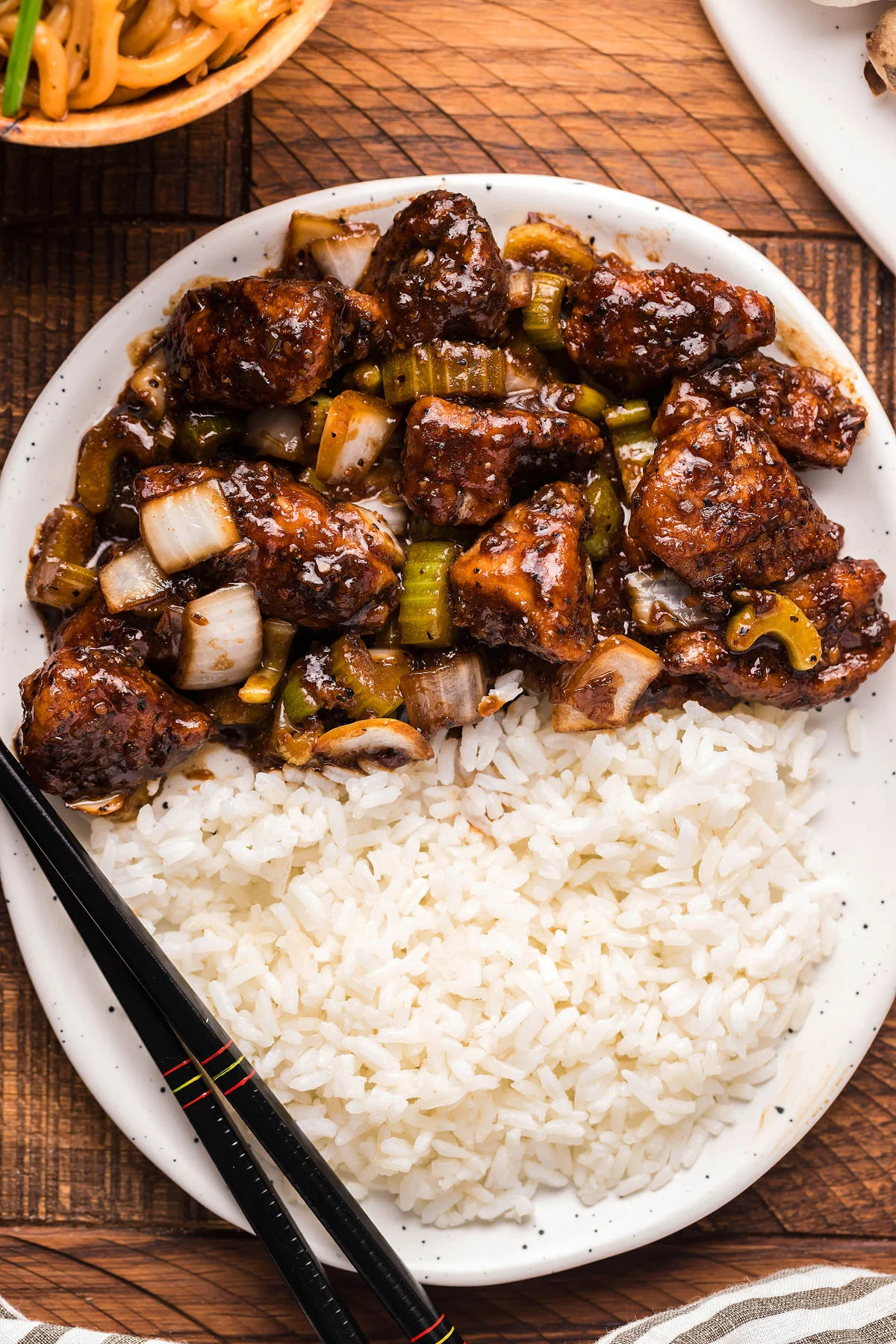
This black pepper chicken recipe is a perfect choice for those craving gluten free Chinese food.
Not only is it a healthier alternative to your favorite Panda Express dish, but it's also ready in just 30 minutes.
Enjoy a quick, delicious, and gluten free Chinese dish without compromising on flavor or your dietary needs.
12. Hoisin Tofu
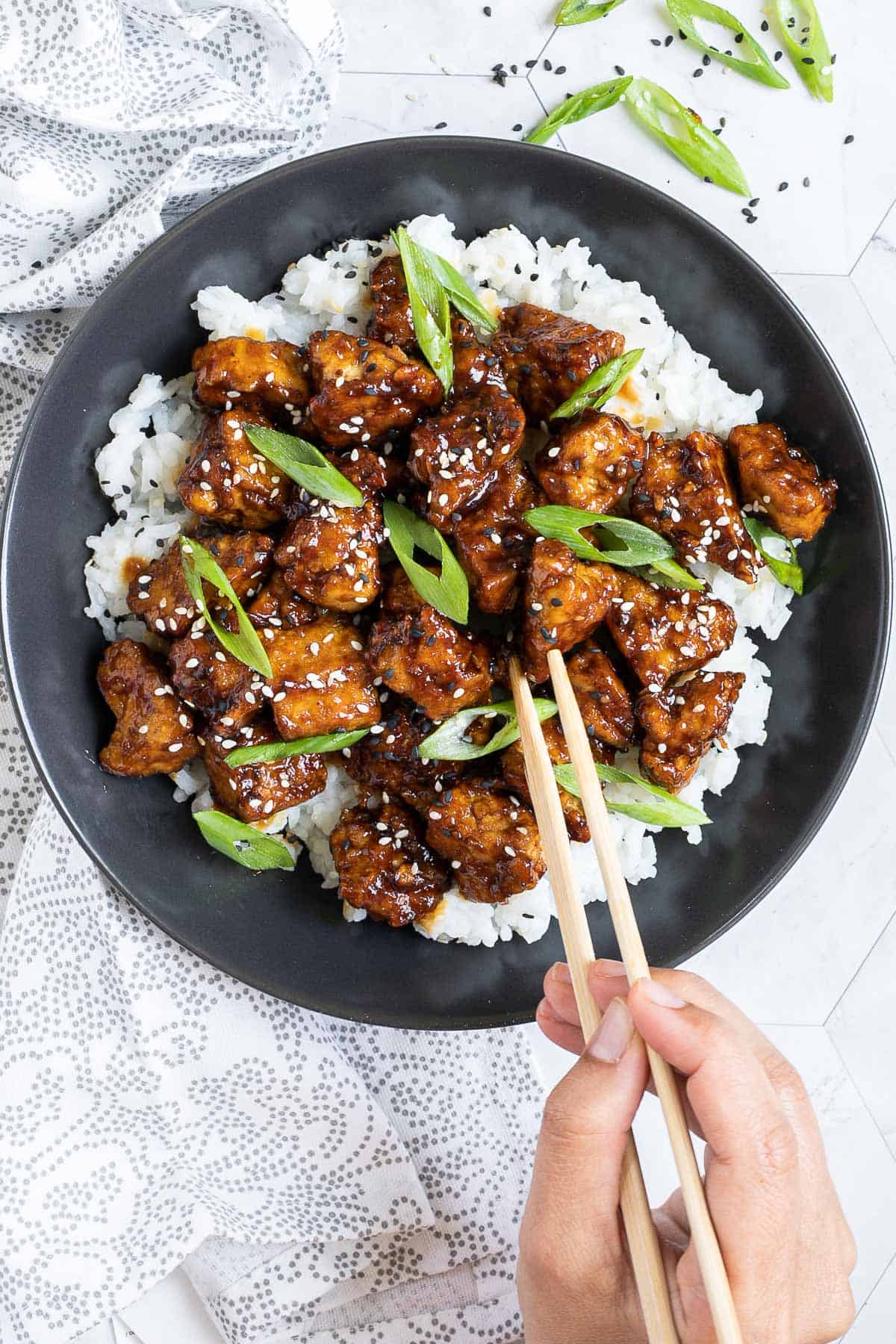
This quick and easy hoisin tofu dish, ready in just 25 minutes, is a perfect choice for gluten free Chinese food lovers.
The sweet and savory flavors are so authentic, your family will be convinced it's a takeout from a Chinese restaurant.
It's not just delicious, but also a healthy gluten free Chinese recipe that everyone can enjoy.
13. Cauliflower Chicken Fried Rice {low Carb, Gluten Free}
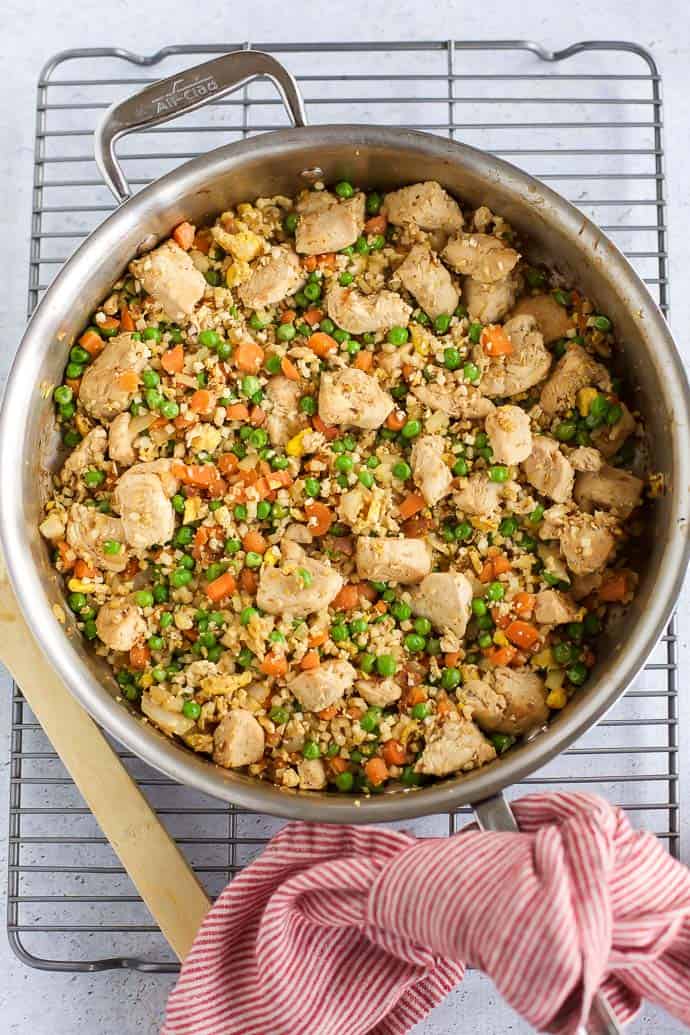
Enjoy a delicious gluten free Chinese dish with our Cauliflower Chicken Fried Rice.
This easy-to-make recipe combines low carb cauliflower rice with chicken, perfect for those on a gluten free diet.
It's not just healthy, it's also packed with flavor, making it a win for gluten free Chinese food lovers.
14. Ground Pork Stir Fry
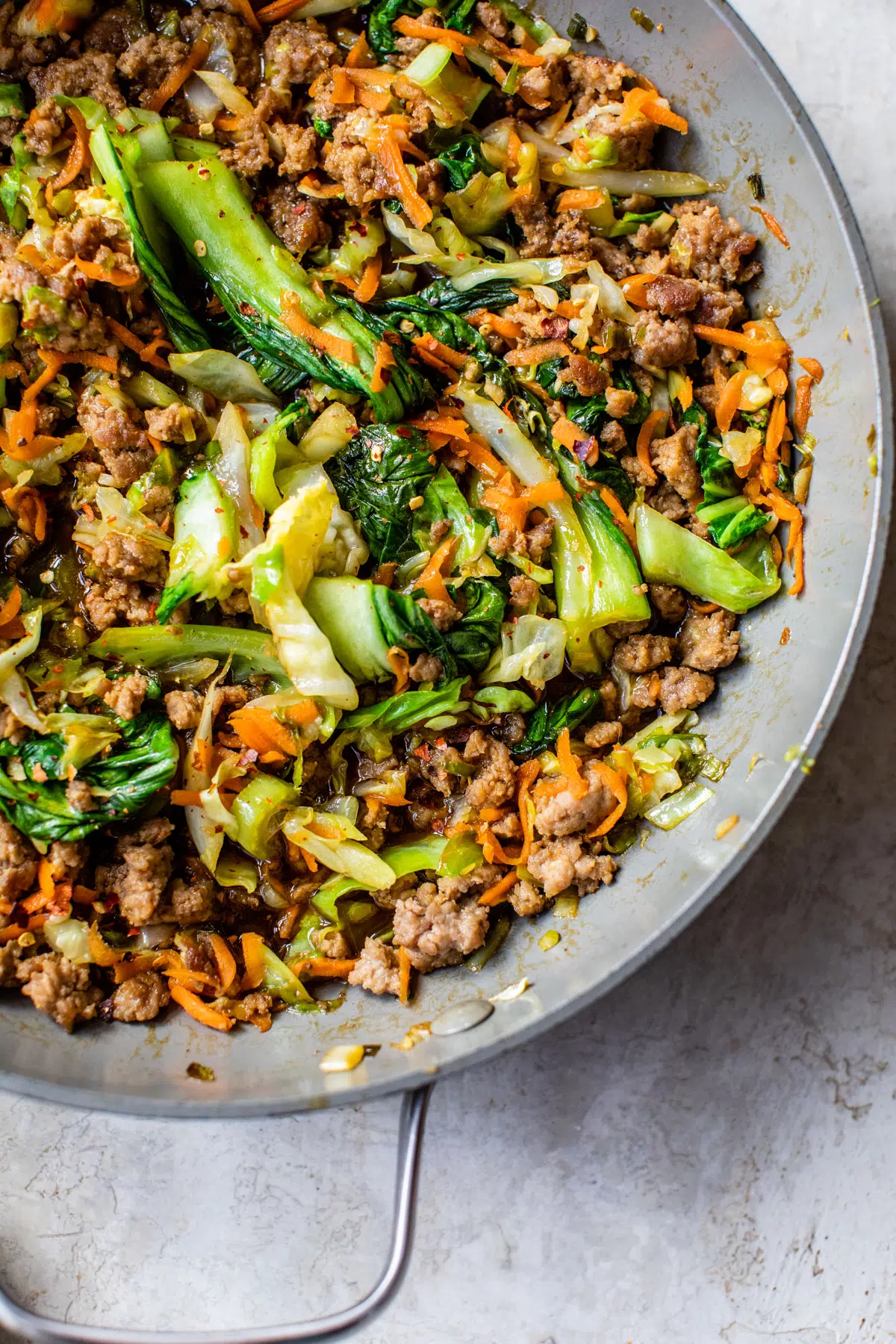
Looking for a quick and easy gluten free Chinese dish? This Ground Pork Stir Fry recipe is a perfect choice.
Ready in just 20 minutes, it combines ground pork, cabbage, and bok choy, all coated in a simple soy sauce marinade.
It's a delicious gluten free Chinese food option that your whole family will love.
15. 10-Minute Gluten-Free Vegetable Lo Mein (Vegan, Allergy-Free)
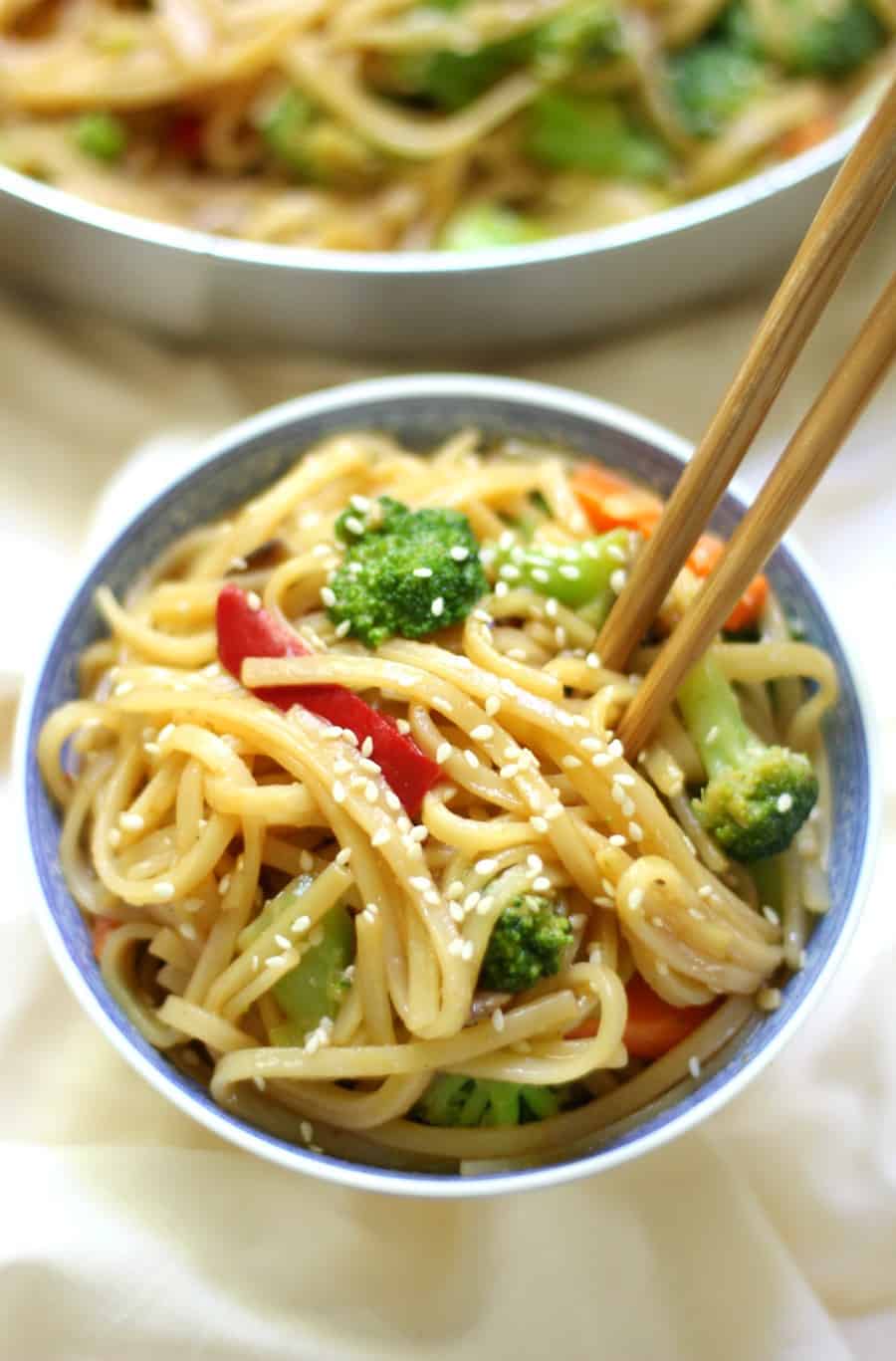
Get your gluten free Chinese food fix in just 10 minutes with this easy Vegetable Lo Mein recipe.
This dish is not only faster than take-out, but it's also vegan and free from the top-8 allergens.
Perfect for dinner, it also makes for healthy, delicious leftover lunches.
16. Moo Shu Beef
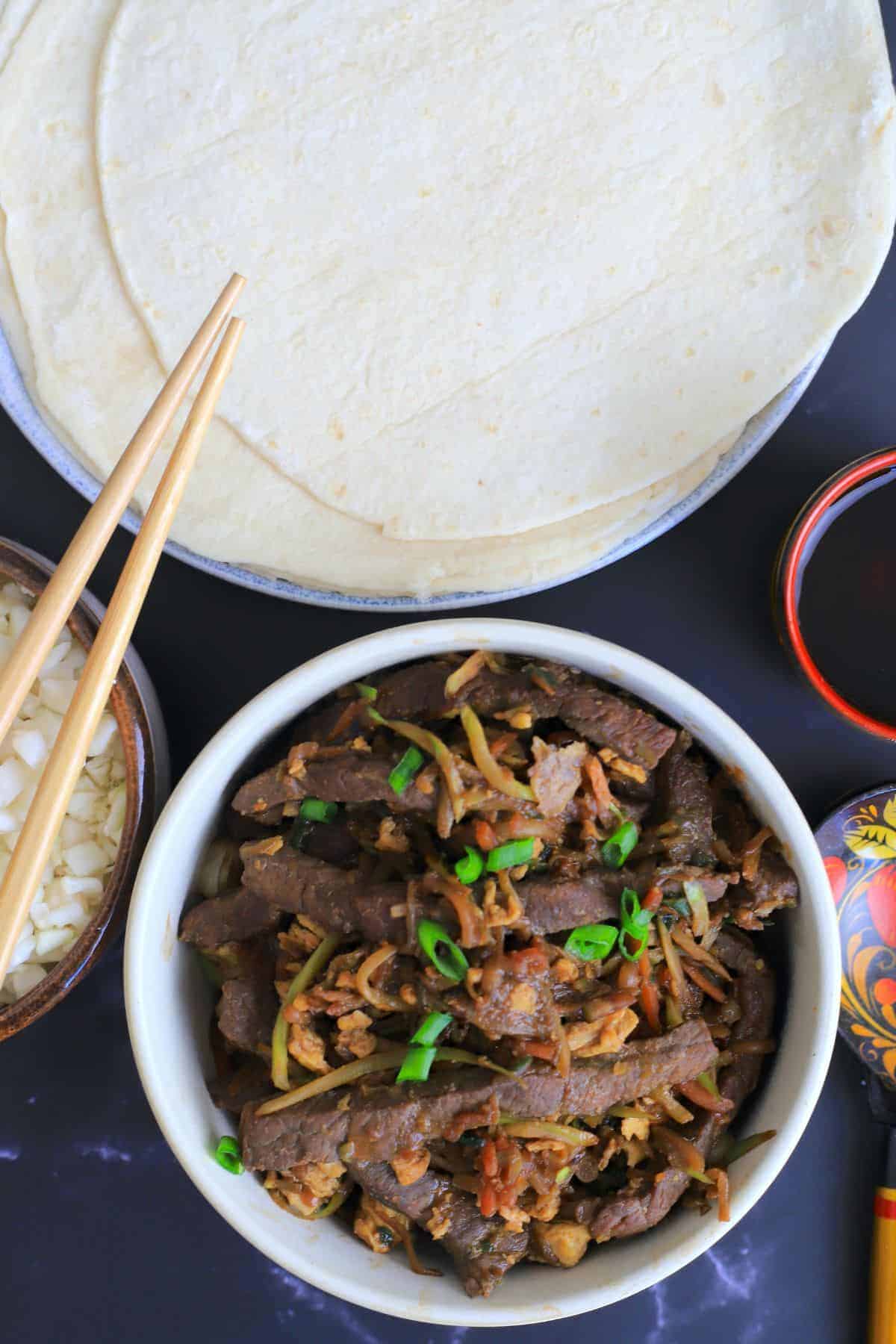
Moo Shu Beef is a fast, easy, and gluten free Chinese dish that you can cook in one pan.
This stir fry combines beef strips with fresh, colorful veggies, making it a healthy gluten free Chinese food option.
The sweet and salty flavors of this dish make it a delicious gluten free Chinese recipe that everyone will love.
17. Asian-Inspired Gluten Free Lettuce Wraps
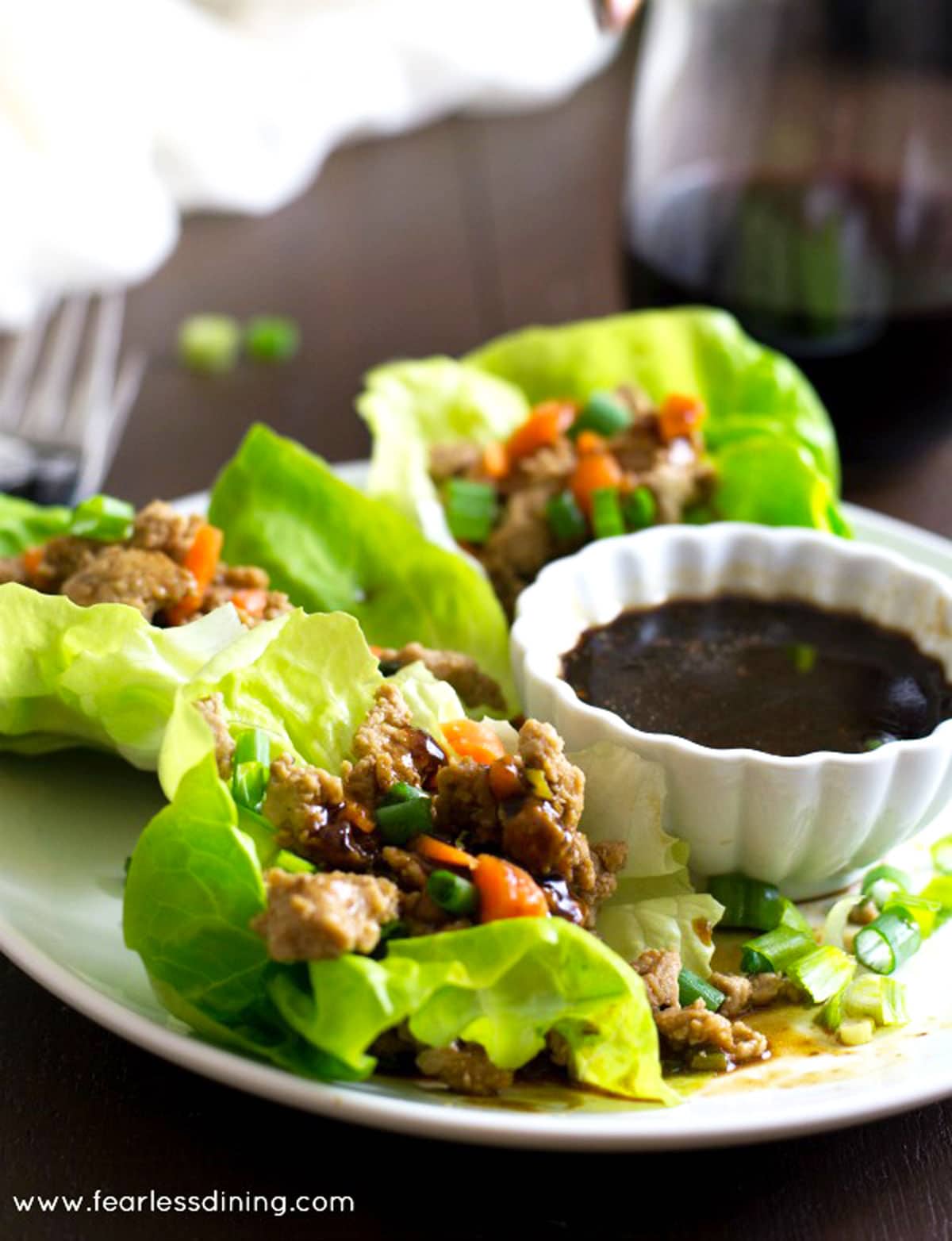
Craving P.F. Chang's lettuce wraps but need a gluten free Chinese food option? Try this simple recipe with ground turkey.
These Asian lettuce wraps are not only easy to make, but they also cater to your gluten free dietary needs.
The tangy lettuce wrap sauce adds a burst of flavor, making this gluten free Chinese dish a must-try for everyone.
18. Gluten Free Sweet and Sour Sauce
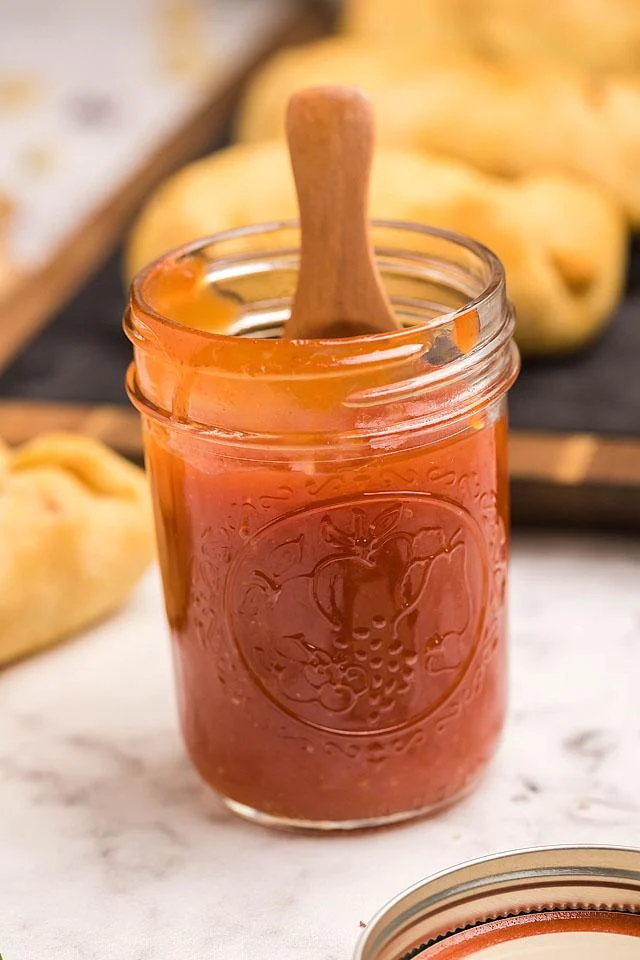
If you're a fan of gluten free Chinese food, you'll love this healthier take on sweet and sour sauce.
This recipe is a result of numerous experiments to perfect a delicious, sugar-free version of the classic sauce.
I'm confident that this homemade sauce will become a favorite addition to your gluten free Chinese dishes.
19. Easy Gluten Free Fried Rice
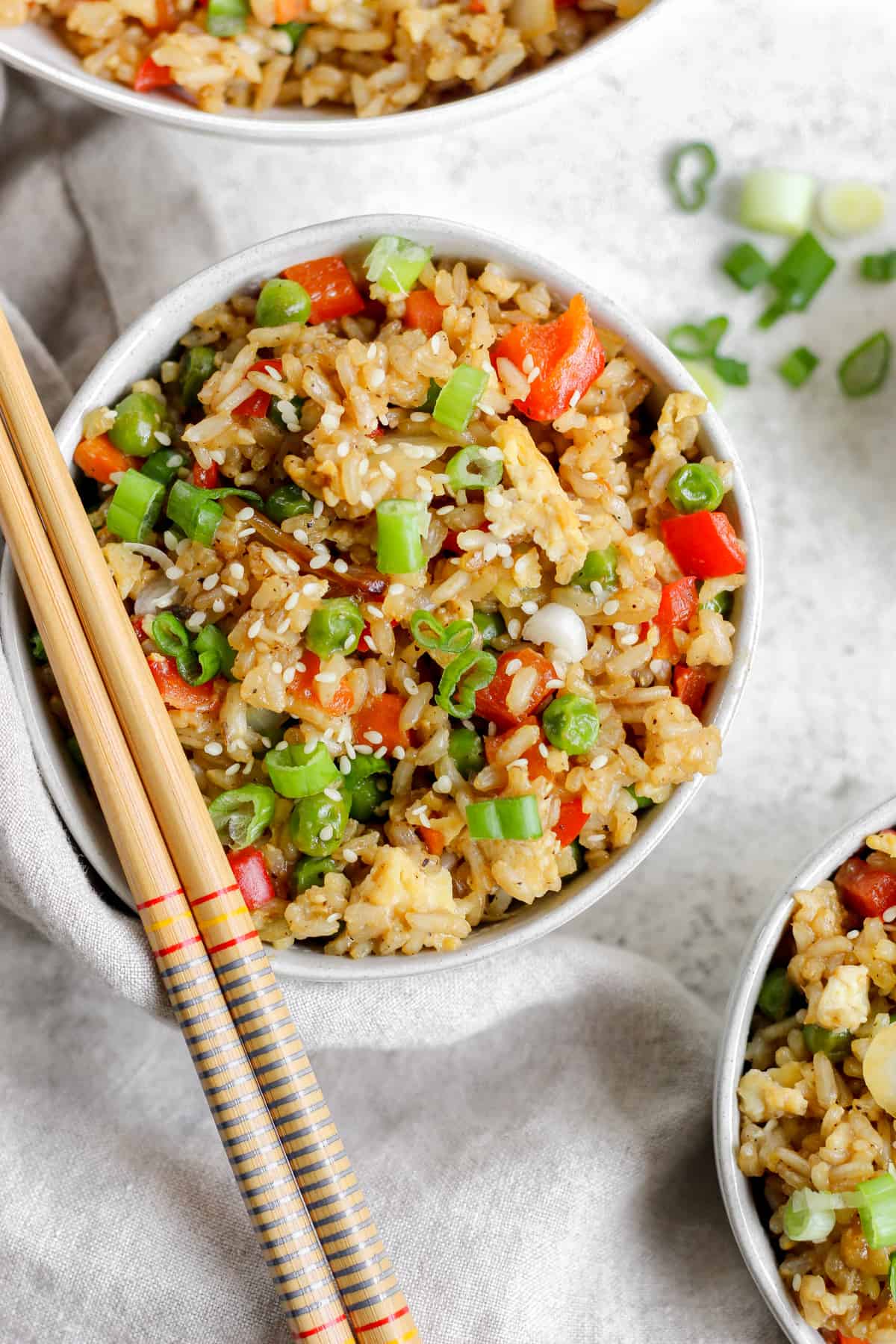
Looking for a gluten free Chinese dish that doesn't compromise on flavor? This fried rice recipe is your answer.
It uses simple, easy-to-find ingredients to recreate the classic fried rice we all love, but in a gluten-free version.
So, if you're craving a satisfying gluten free Chinese food, this recipe will surely hit the spot.
20. Gluten-Free Scallion Oil Noodles
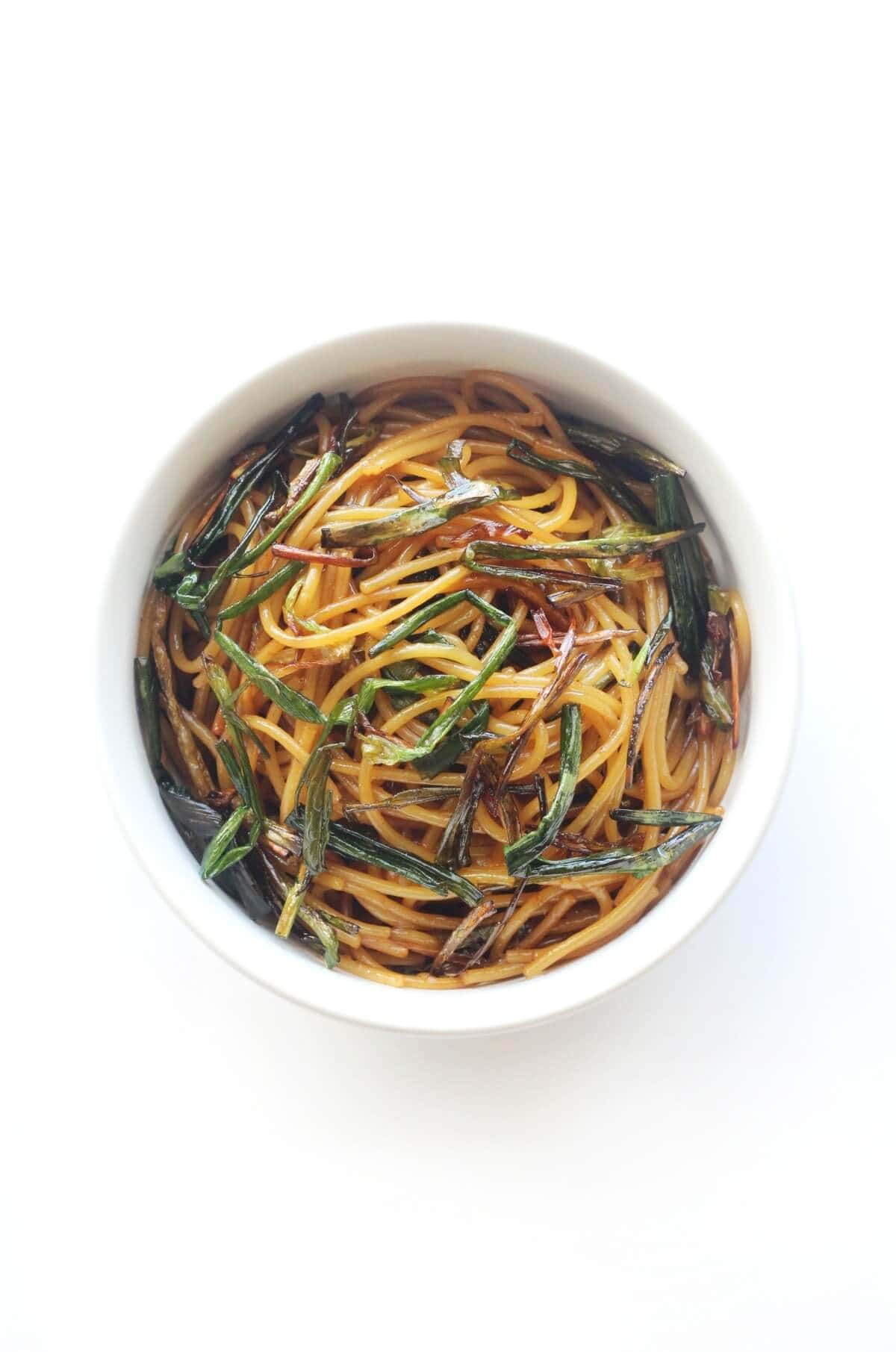
If you're looking for a gluten free Chinese dish, these Gluten-Free scallion oil noodles are a perfect choice.
With just five ingredients, this authentic Chinese recipe is not only simple but also vegan and allergy-free.
It's a quick and easy solution for those who love gluten free Chinese food and want to enjoy it in the comfort of their own home.
21. 10-minute Spicy Sichuan Peanut Noodles
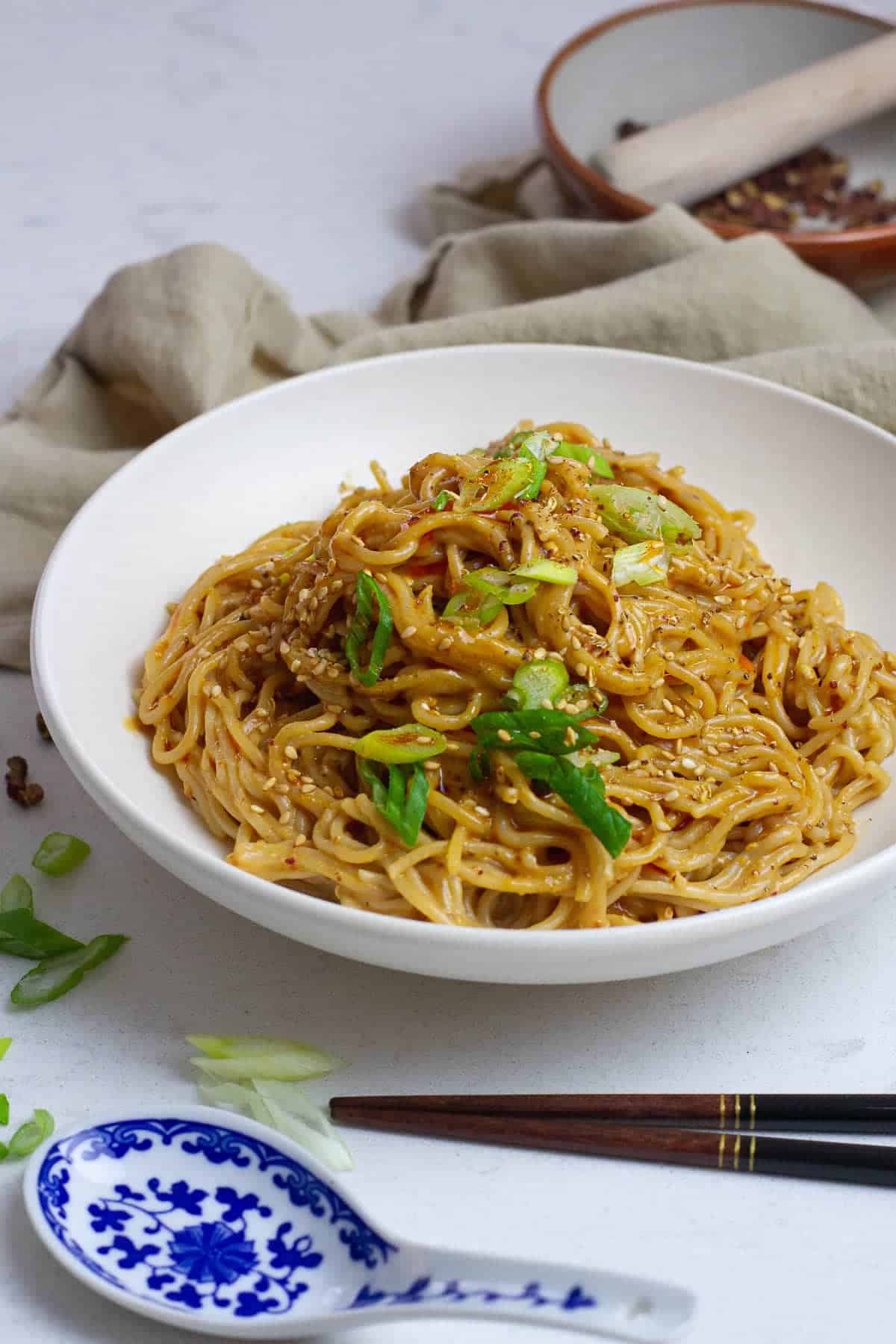
If you're searching for a gluten free Chinese dish, these spicy Sichuan peanut noodles are a perfect choice.
The tangy nutty sauce, infused with numbing Sichuan peppers, not only adds a burst of flavor but is also gluten free.
It's a quick and easy gluten free Chinese recipe that's sure to satisfy your cravings.
22. Yummy Pork Egg Roll in a Bowl – 15 Minute Meal
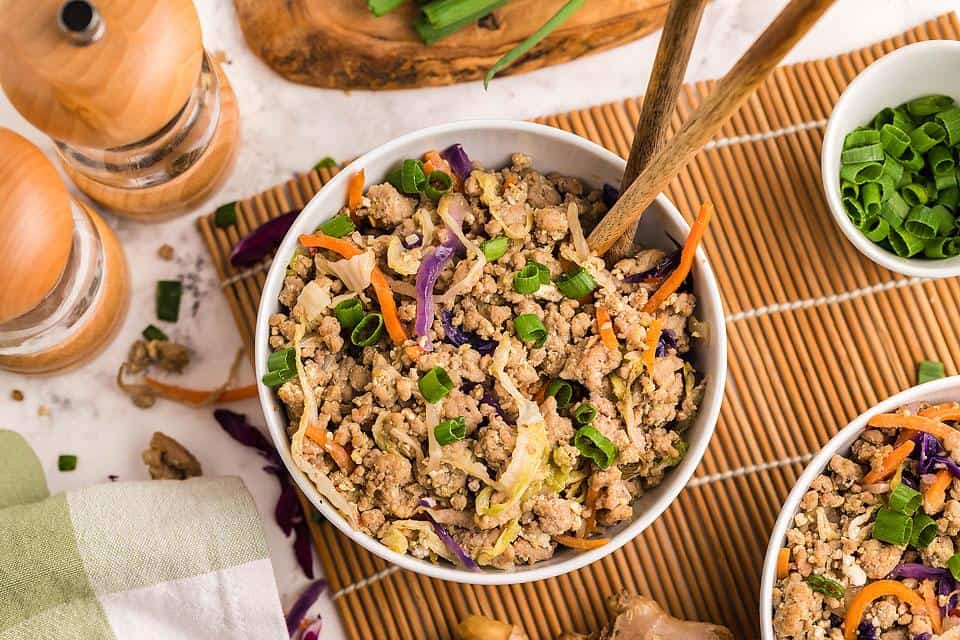
For those who love gluten free Chinese food, the Pork egg roll in a bowl is a perfect choice.
It's a simple, one-pan meal packed with ground pork, veggies, and other delicious flavors that will satisfy your Asian food cravings.
Best of all, this gluten free Chinese dish can be whipped up in just 15 minutes, making it an ideal choice for a busy weeknight dinner.
23. Chinese Cashew Chicken (Gluten-Free, Soy-Free)
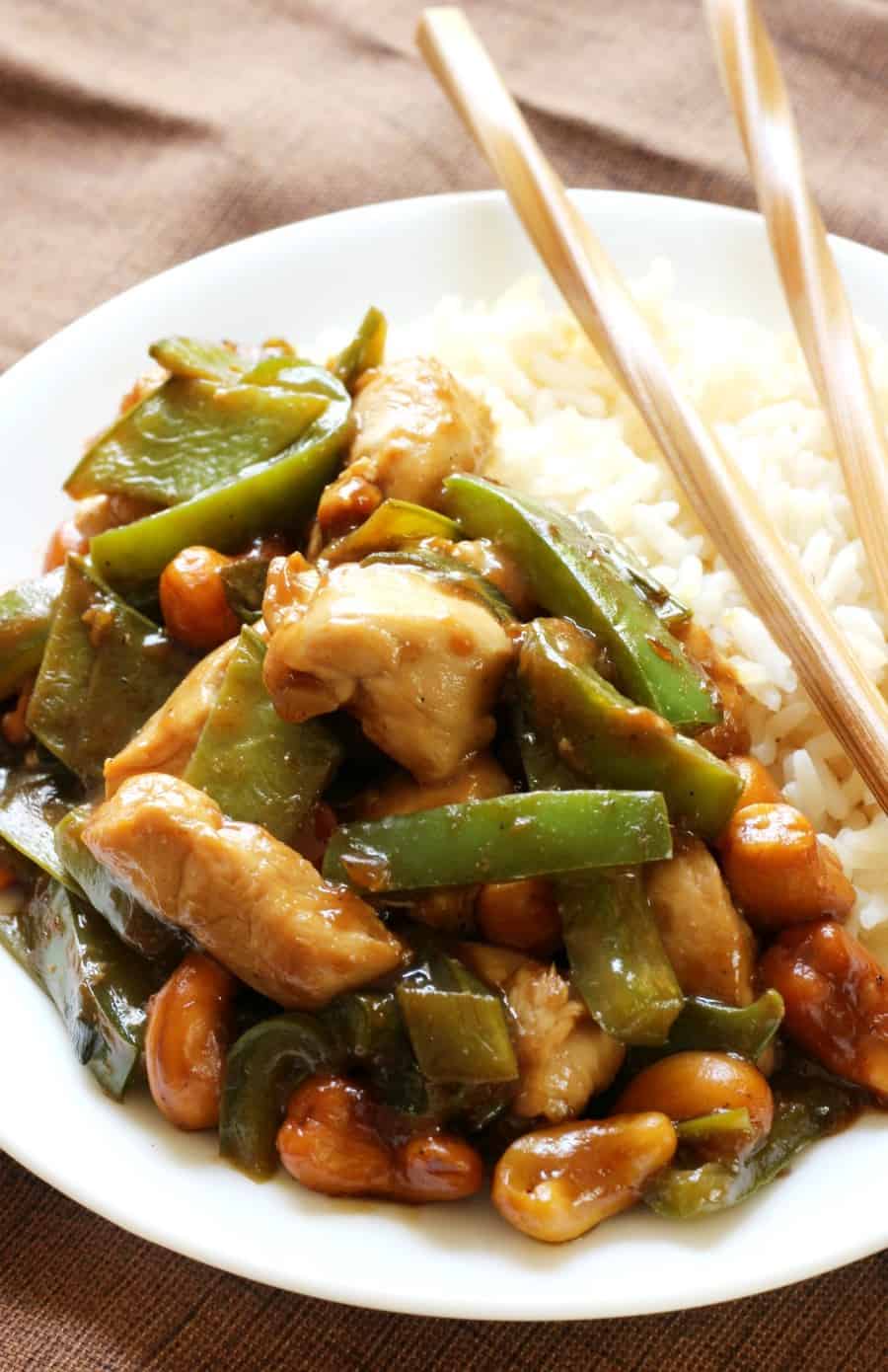
Say goodbye to expensive take-out with this gluten free Chinese food recipe!
Our Cashew Chicken dish is not only gluten-free but also soy-free, making it a healthier alternative for dinner.
Plus, the leftovers make a perfect lunch, ensuring you get the best out of this gluten free Chinese dish.
24. Chinese Beef and Vegetable Stir Fry - Danas Table
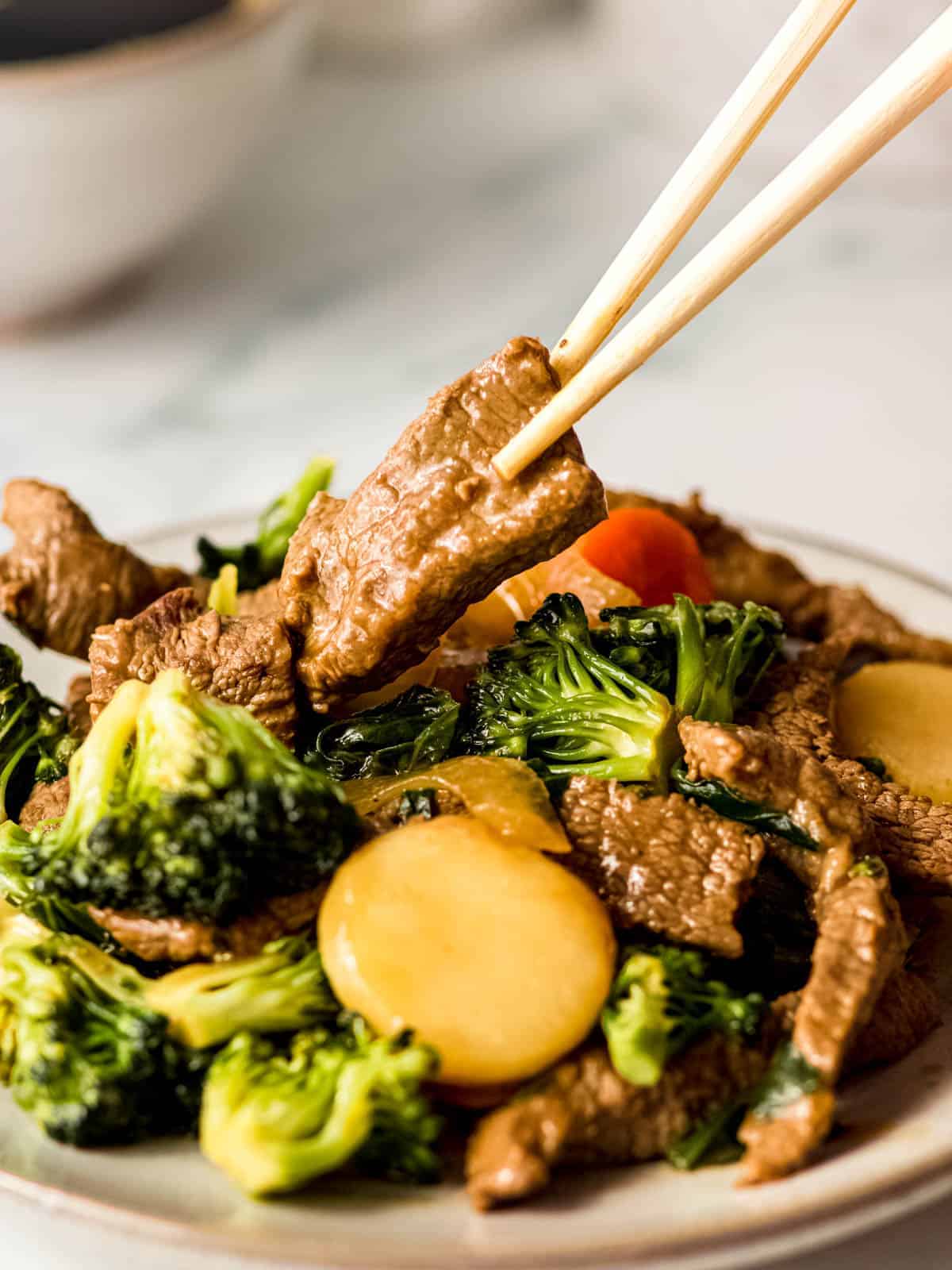
This beef and vegetable stir fry is a perfect choice for gluten free Chinese food lovers.
It's a quick and savory dinner option that you can prepare in advance.
Enjoy the authentic flavors of a Chinese restaurant right in your home, without worrying about gluten.
25. Easy Stir Fry Veggies - Gluten Free, Soy Free, Whole30
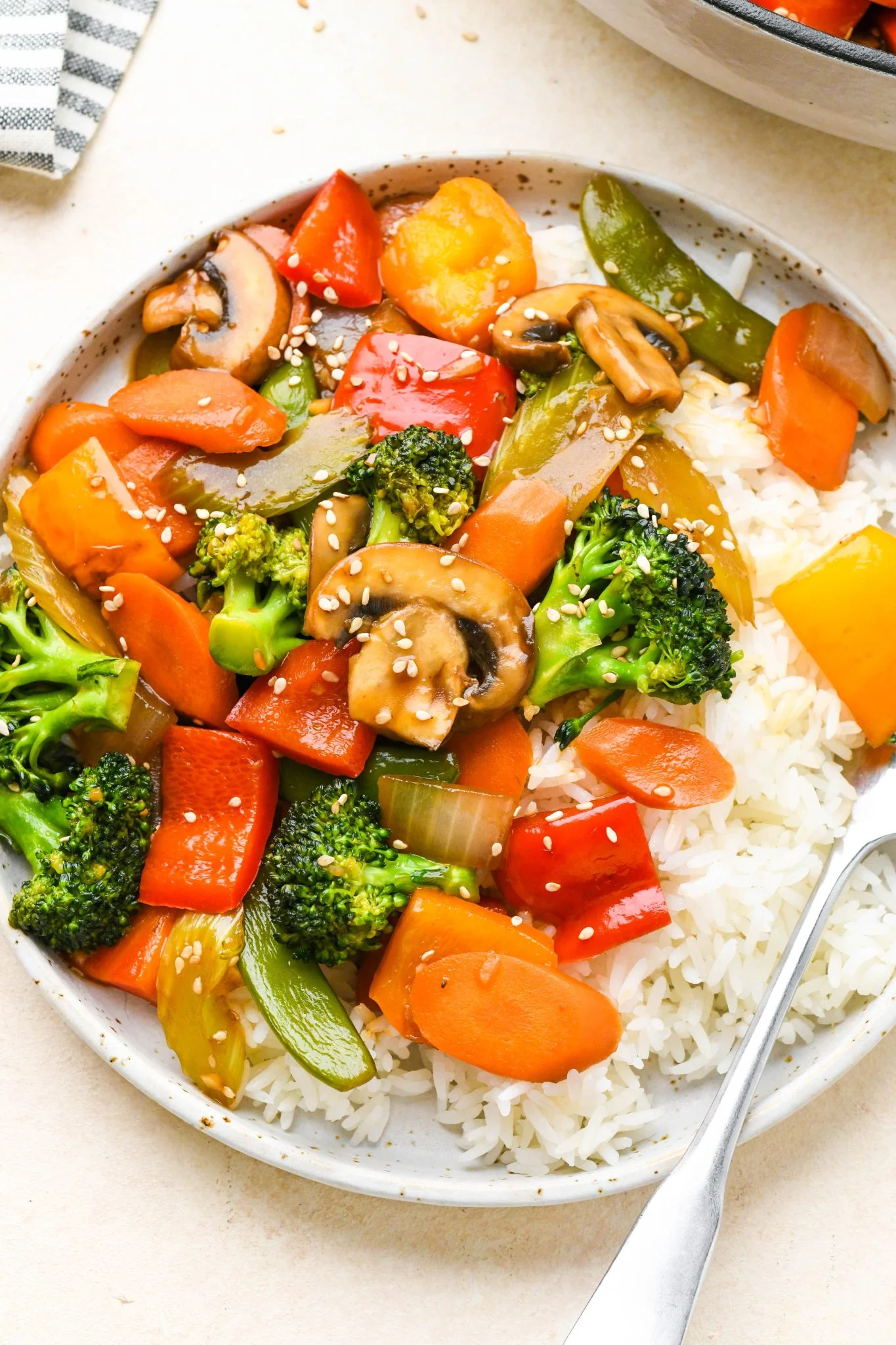
This quick and simple stir fry dish is a great choice for those looking for gluten free Chinese food.
Loaded with a variety of healthy vegetables, it's also soy free and can be prepared in less than 30 minutes.
Not only is it gluten free, but it's also vegan, Whole30 compliant, and paleo-friendly, making it a versatile dish for various dietary needs.
26. Black Bean Chicken & Vegetables (Gluten-Free, Allergy-Free)
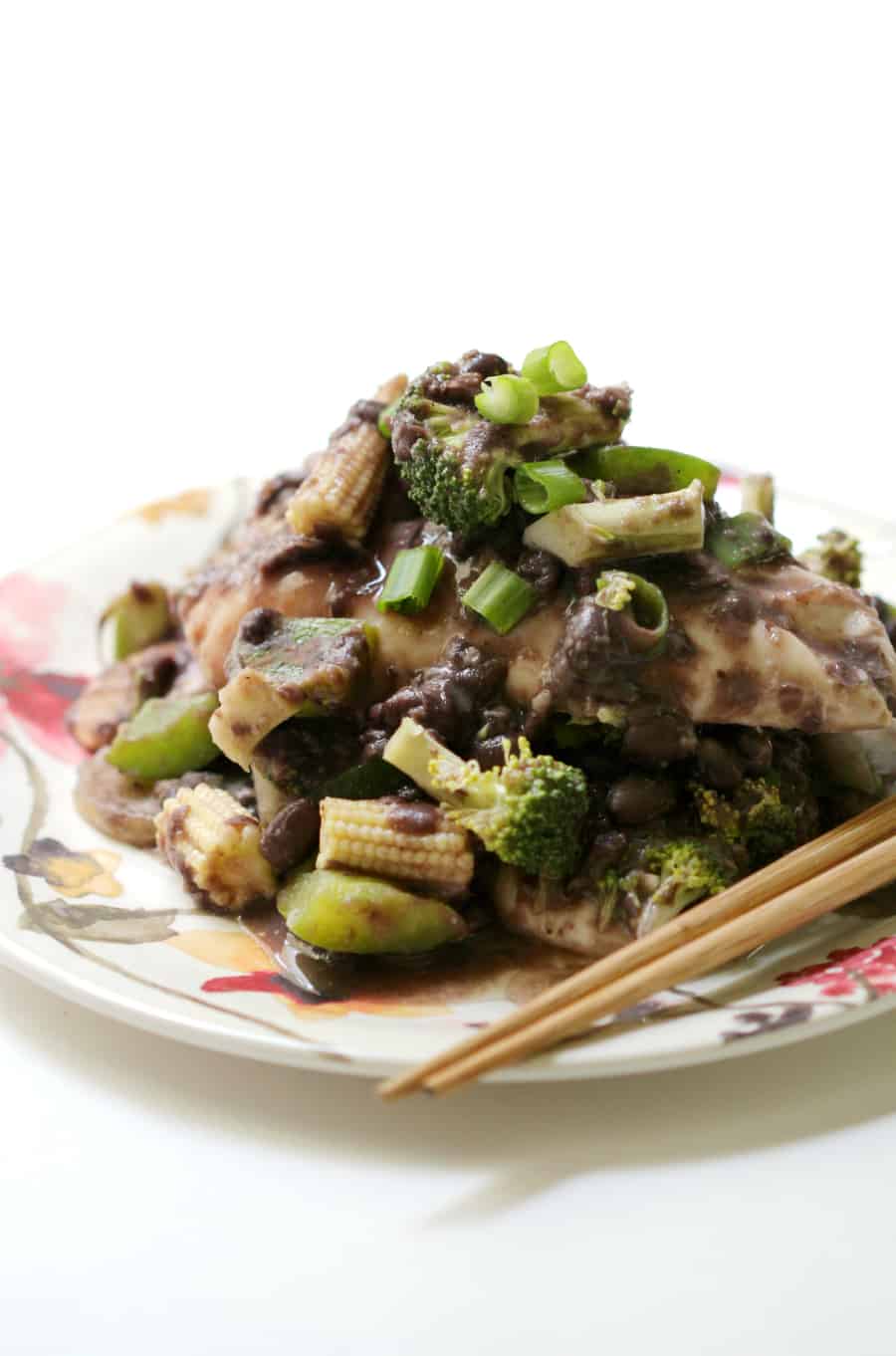
Looking for a gluten free Chinese dish? Try our healthy Black Bean Chicken & Vegetables recipe.
This dish is not only gluten-free but also allergy-free, making it a perfect choice for those with dietary restrictions.
With a homemade black bean sauce, Asian vegetables, and tender chicken pieces, this gluten free Chinese recipe is sure to satisfy your cravings.
27. Ten-Minute Miso Noodle Soup
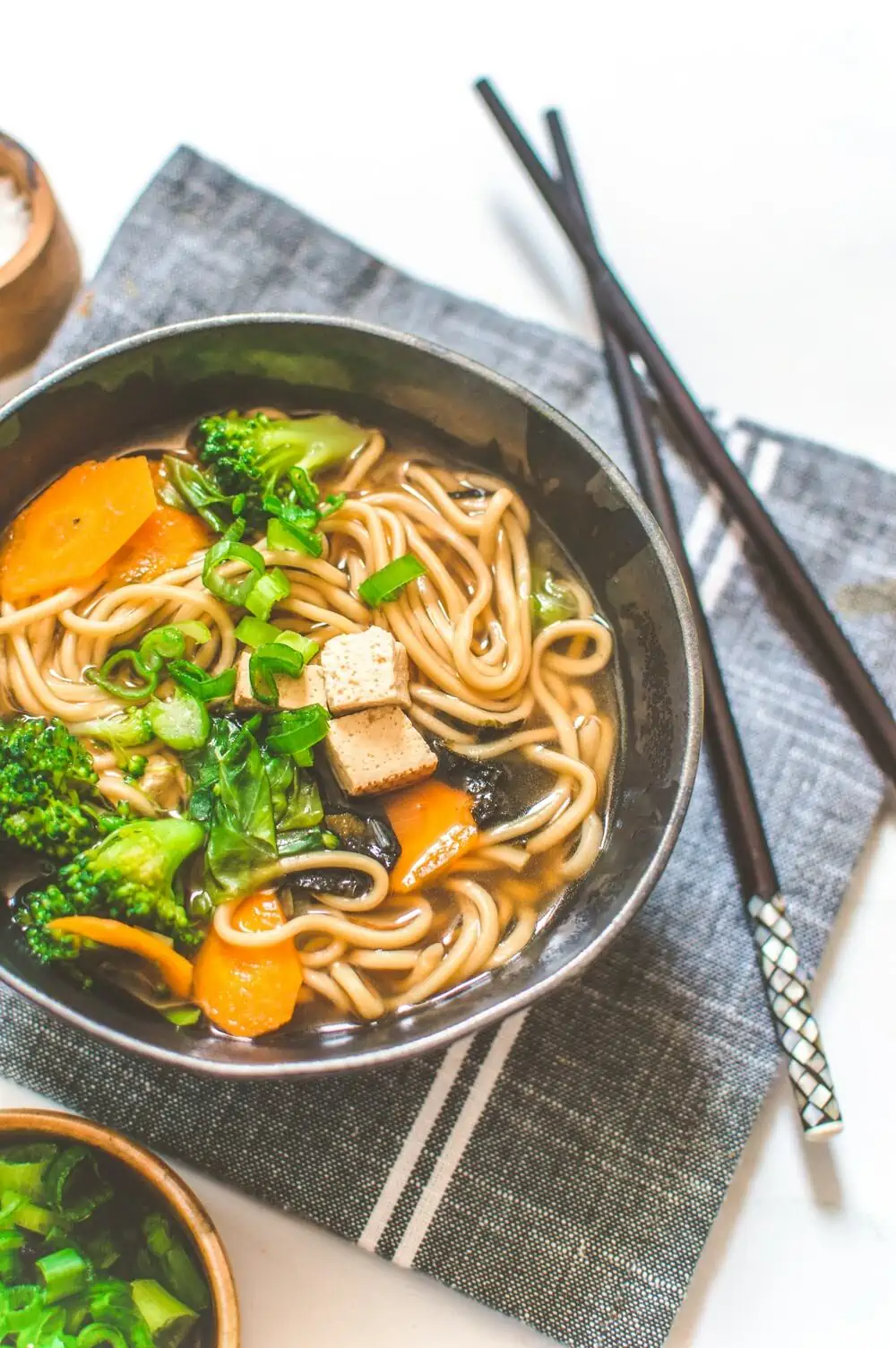
Get ready to fall in love with this ten-minute gluten free Chinese recipe for vegan miso soup with noodles!
It's an ideal choice for a comforting, delicious dinner that caters to your gluten free Asian food needs.
Not only is it bursting with flavor, but it's also a quick and easy meal solution for those on a gluten free diet.
28. Chinese Five Spice Chicken Bowl
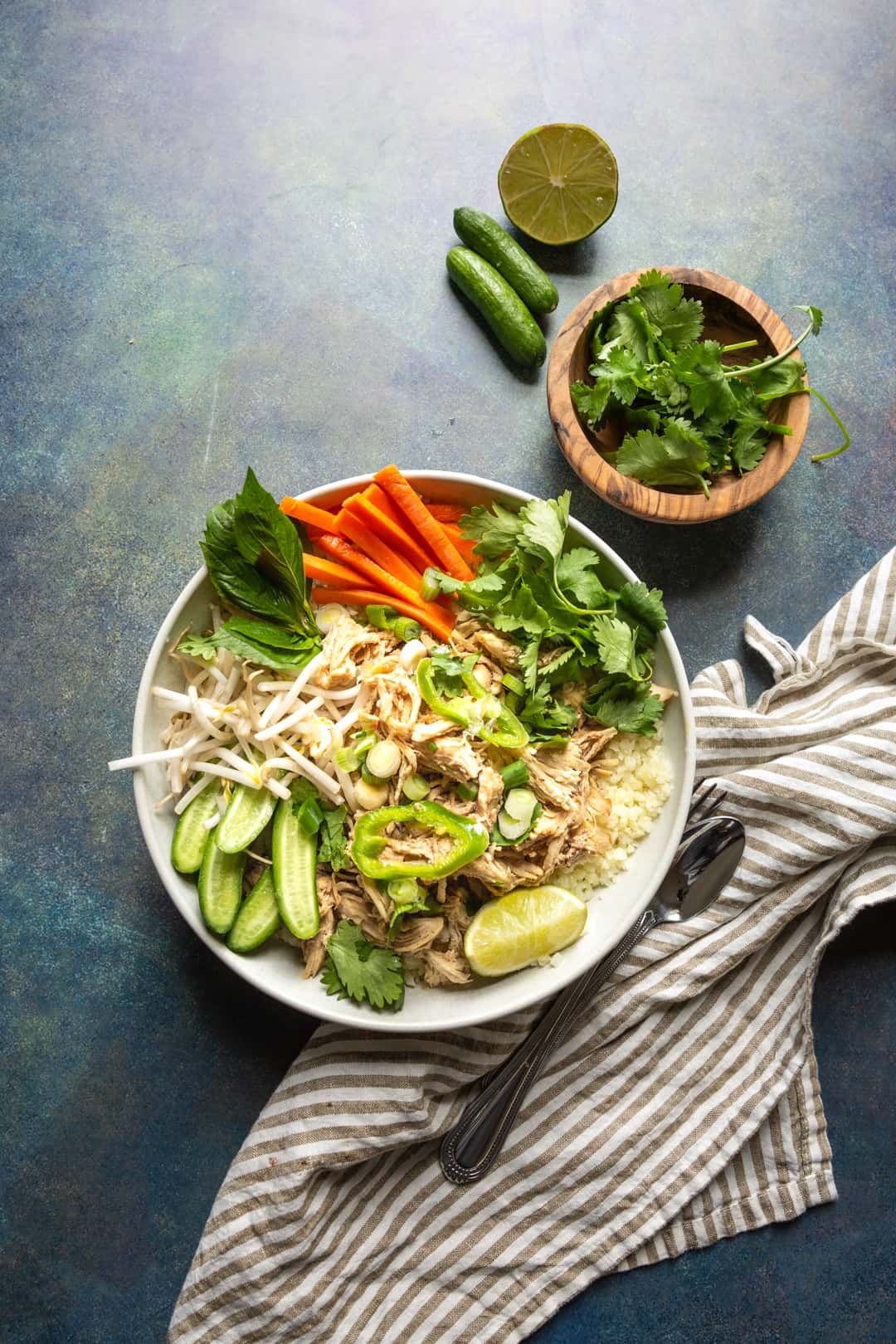
If you're craving gluten free Chinese food, this Chinese Five Spice Chicken Bowl is a must-try.
Not only is it bursting with flavor, but it's also filled with nutritious ingredients that align with a gluten free diet.
Best of all, this gluten free Chinese dish can be whipped up in less than 30 minutes, making it a perfect choice for a quick and easy weeknight meal.
29. Healthy Gluten Free Chicken Teriyaki
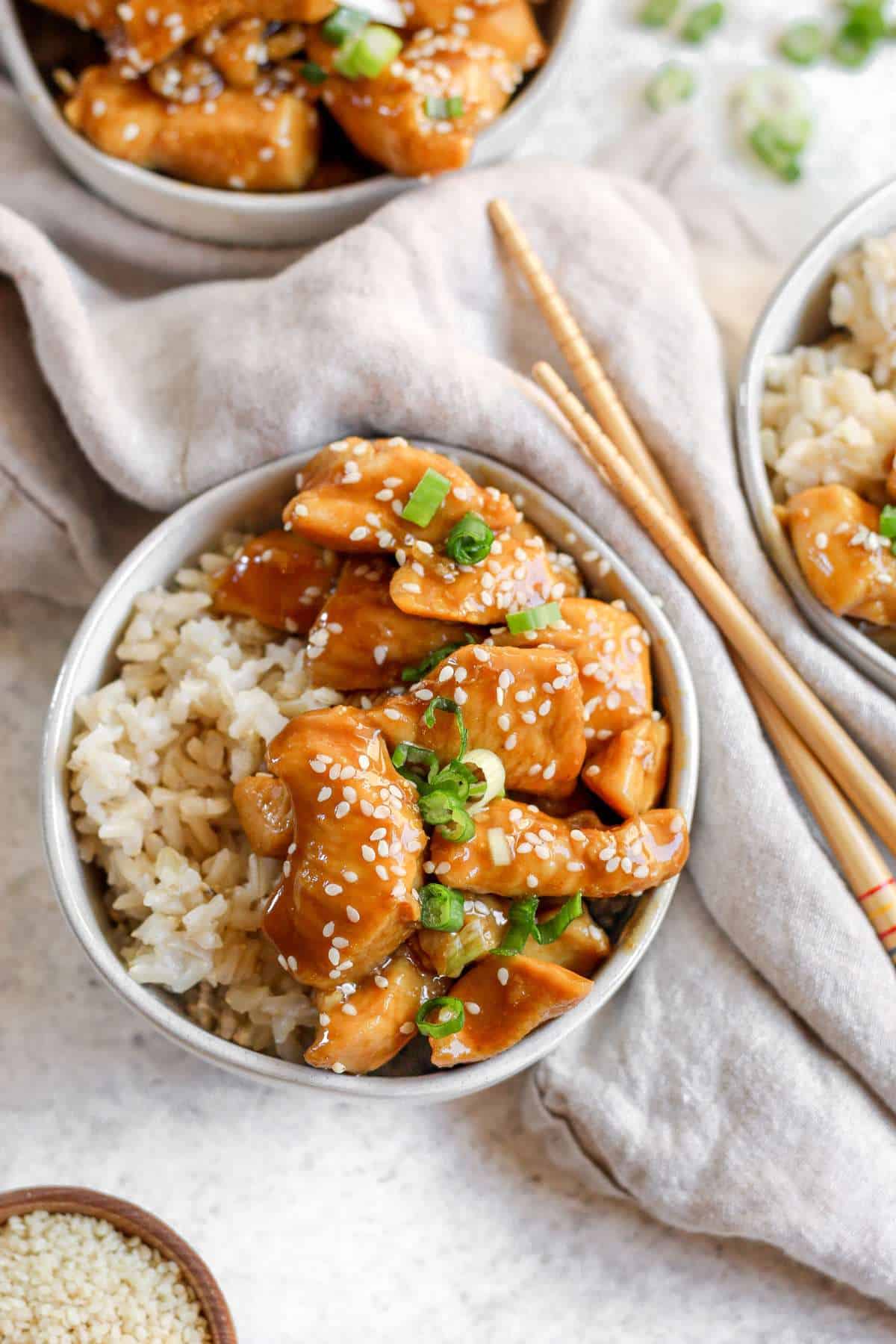
This dish is a gluten free Chinese food lover's dream, bursting with flavor yet entirely free from gluten.
It's a healthier spin on the beloved teriyaki classic, making it a perfect choice for those on a gluten free diet.
With its rich ingredients and gluten free promise, this recipe brings a new, healthier dimension to Chinese cuisine.
30. Gluten Free Kung Pao Chicken

If you're a fan of gluten free Chinese food, you'll love this easy-to-make Gluten-Free Kung Pao Chicken. It's a healthier alternative to your favorite take-out dish.
This gluten free Chinese recipe is a perfect blend of sweet and salty flavors, sure to satisfy your cravings. It's packed with so much flavor, you won't even miss the gluten.
Make this savory dish your new weeknight go-to. It's not just delicious, but also a great choice for those following a gluten free diet.
31. Panda Express Mushroom Chicken (Easy One Pan Recipe)
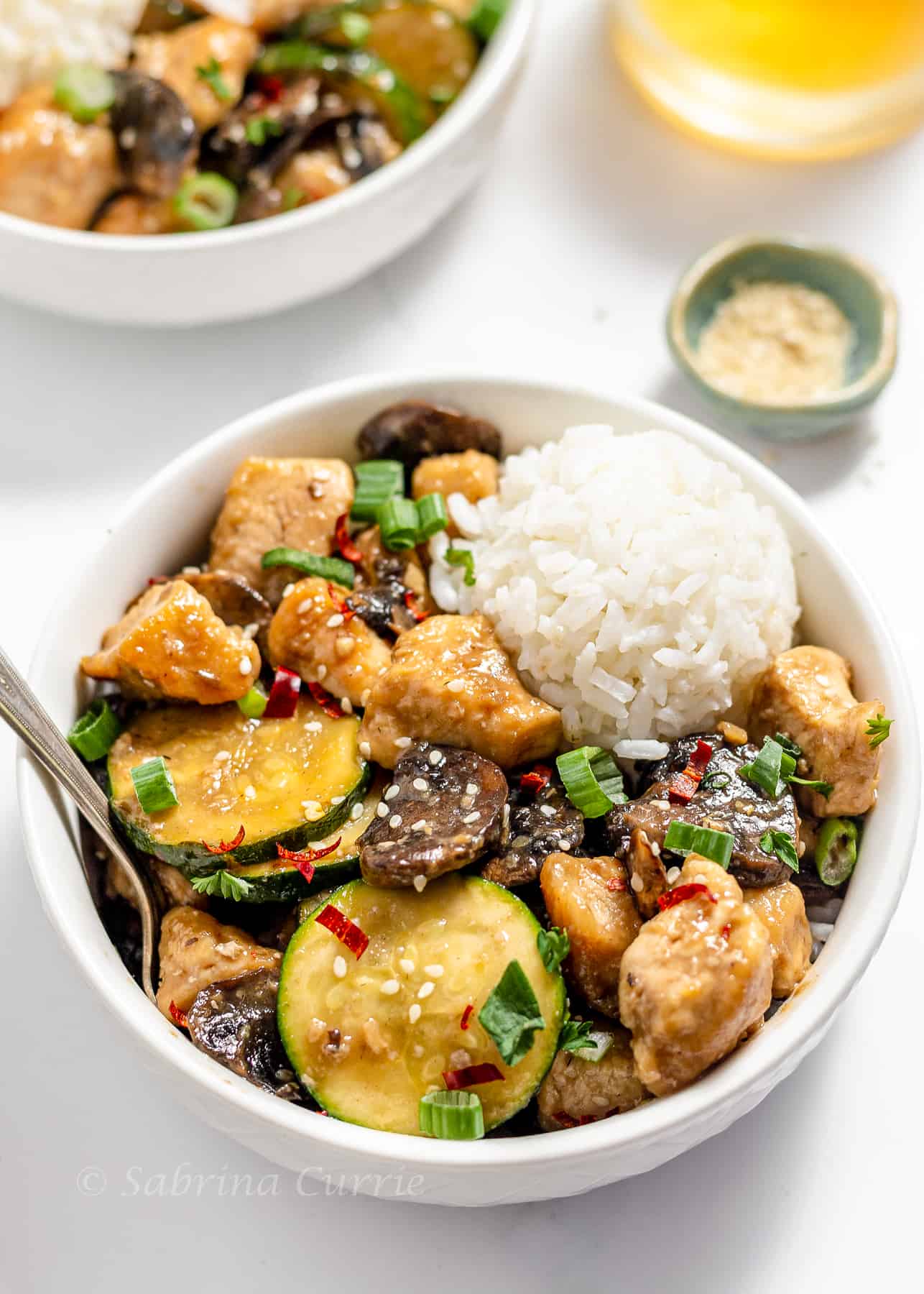
This Panda Express mushroom chicken, bursting with the flavors of garlic, ginger, and soy, is a perfect choice for gluten free Chinese food lovers.
Prepared in just one pan and ready in under 30 minutes, it's an easy and quick gluten free Chinese dish to add to your menu.
With its velvety texture and dairy-free, gluten-free ingredients, it's a delicious and healthy gluten free Chinese recipe for everyone to enjoy.



Tell Us What You Think